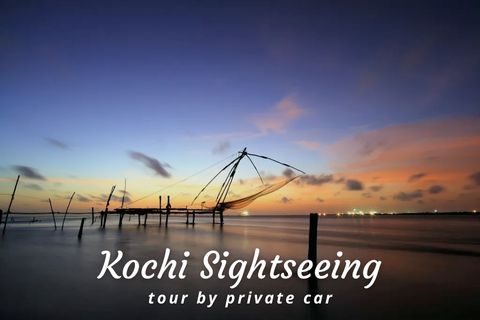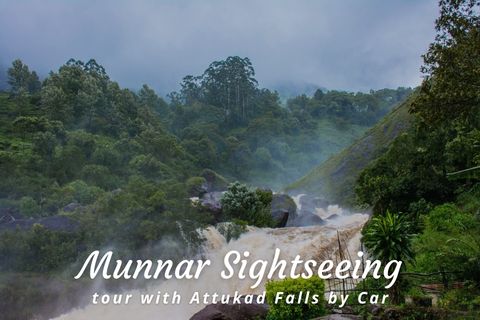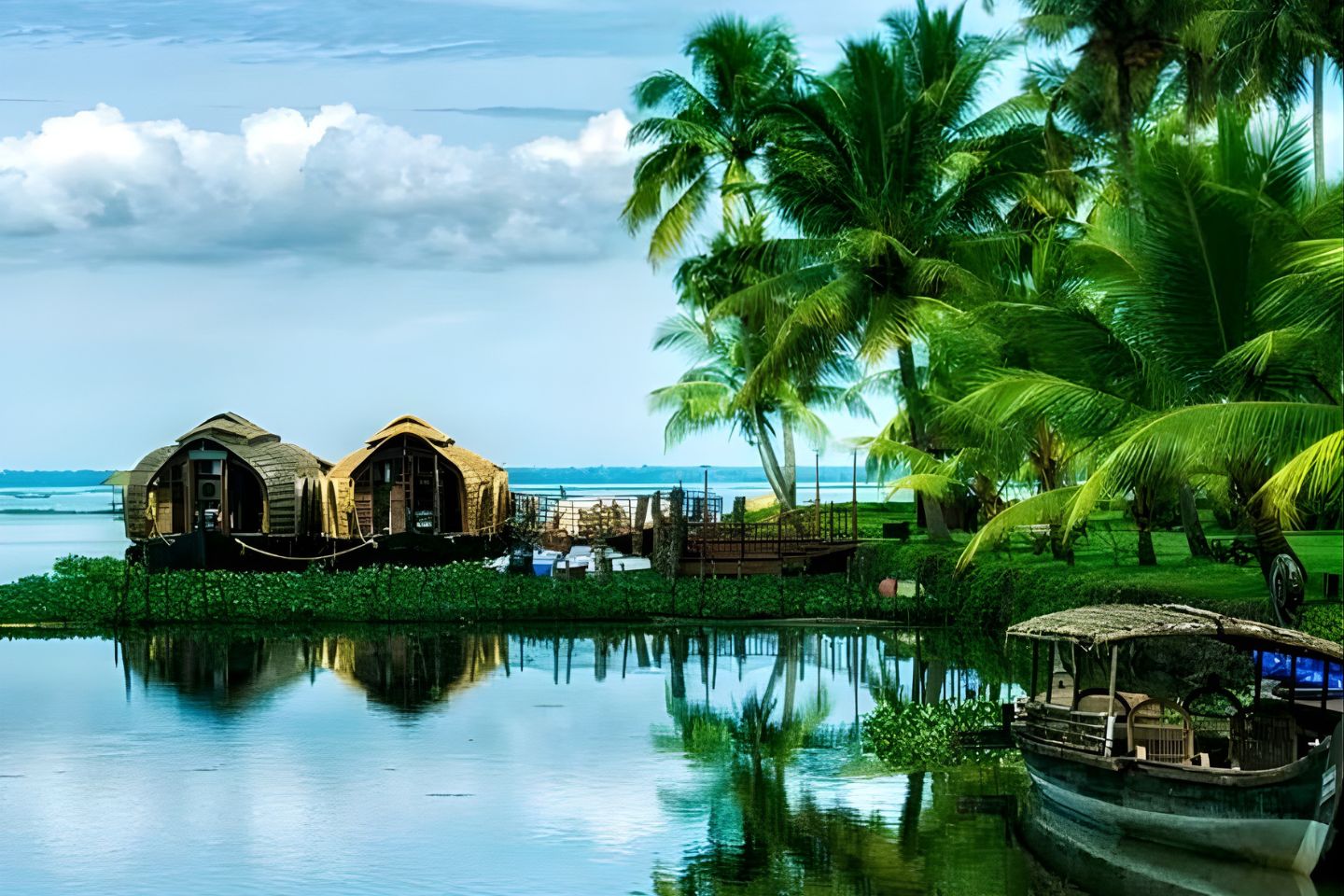Applauded for its tourism initiatives, Kerala offers big surprises despite its small size (as compared to most other Indian states). Tucked away in the southern portion of India, Kerala is most notably called ‘God’s Own Country’. There are several reasons for this moniker. However, what seems most evident is how beautifully the natural landscapes of this state have made this an earthly paradise.
The diversity of relief features that Kerala offers can be matched by few other states in the country. One can explore various islands or entire clusters thereof, hike up numerous hills, camp in tropical forests, sight elusive wild animals at national parks, go birdwatching at dawn or dusk, enjoy classical music, dance and martial arts performances, or relish the spicy cuisine.
Here is an exhaustive list of tourist places in Kerala. While it brings to life touristy options such as the backwaters, hill stations or forest reserves, it doesn’t leave behind the offbeat charms of quaint villages and little known islands.
Take your time to immerse yourself into the sights, sounds and flavours of Kerala as we introduce over 40 destinations for you to plan your next long trip to this southern gem.
1. Alleppey
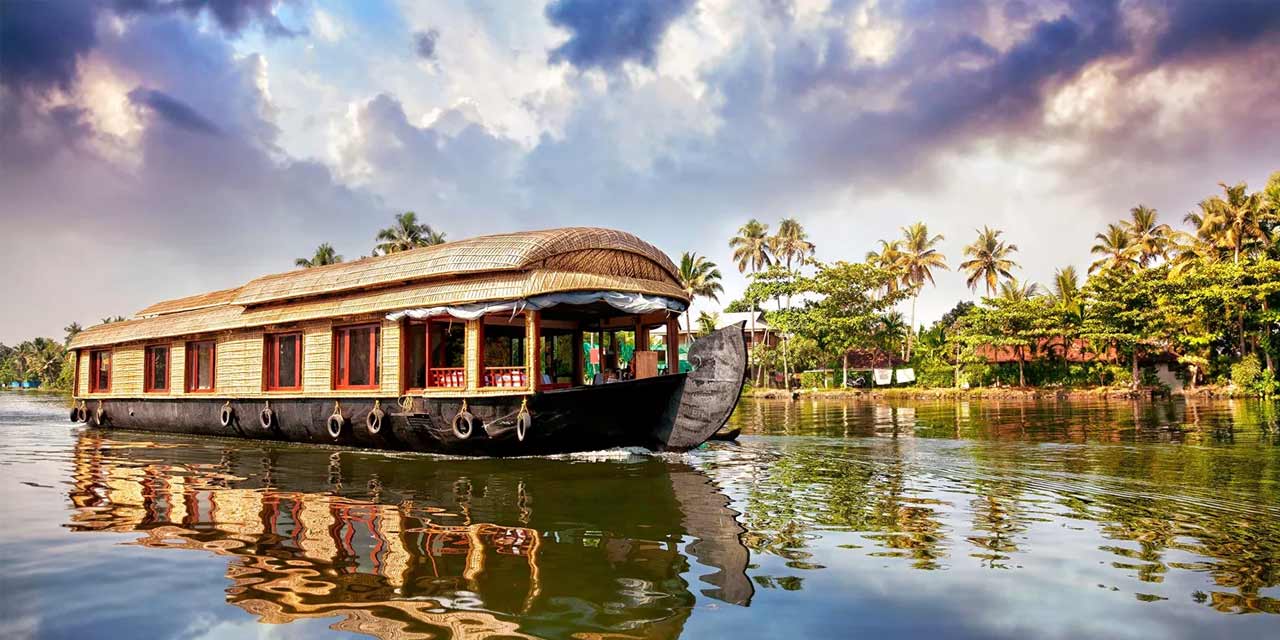
It is virtually impossible to imagine Kerala without its backwaters. And at the very mention of the tranquil backwaters, Alleppey comes to mind. Also known as Alappuzha, the city enjoys unrivalled access to the Laccadive Sea and its backwaters. A slow houseboat-ride along the narrow waterways is unmissable, whether you opt for a few hours of sightseeing or a multi-day cruise. Many of these traditional houseboats are equipped with suites with multiple bedrooms, a fully functional kitchen and bathroom for the convenience of their guests.
Alleppey is sometimes called ‘The Venice of the East’ since topographically, the city is mostly covered by water, and the locals commute via boats. Both speedboats and traditional boats that require rowing can be seen in the backdrop as you travel through Alappuzha.
While the backwaters are deep at certain points, the level sometimes reduces to a shallow depth at narrow openings through mangroves. Steering the houseboat can sometimes be a challenge under such conditions. This is why the oarsmen of Alleppey use a long bamboo rod to push against the bottom of the backwater, which can be severely marshy at certain stretches.
The water-world of Alleppey provide ample opportunities to gaze upon distant islands, watch the fishermen and their wives wait for their catch, look at locals trading upon boats, and even see how the husk of coconut shells are used to produce ropes (which are then utilized to tie up the various parts of houseboats together).
Houseboat tours along the coastline of Alappuzha usually stop at a village for the live viewing of rope-making and also to look at the spice farms of the village, before breaking for a traditional meal served on banana leaf.
Alleppey also boasts of some pretty beaches such as Alappuzha Beach where one can indulge in some beachside fun activities or just relax with a view of the sunset. There is a lighthouse close to this beach which adds to the lure of the place.
2. Cochin
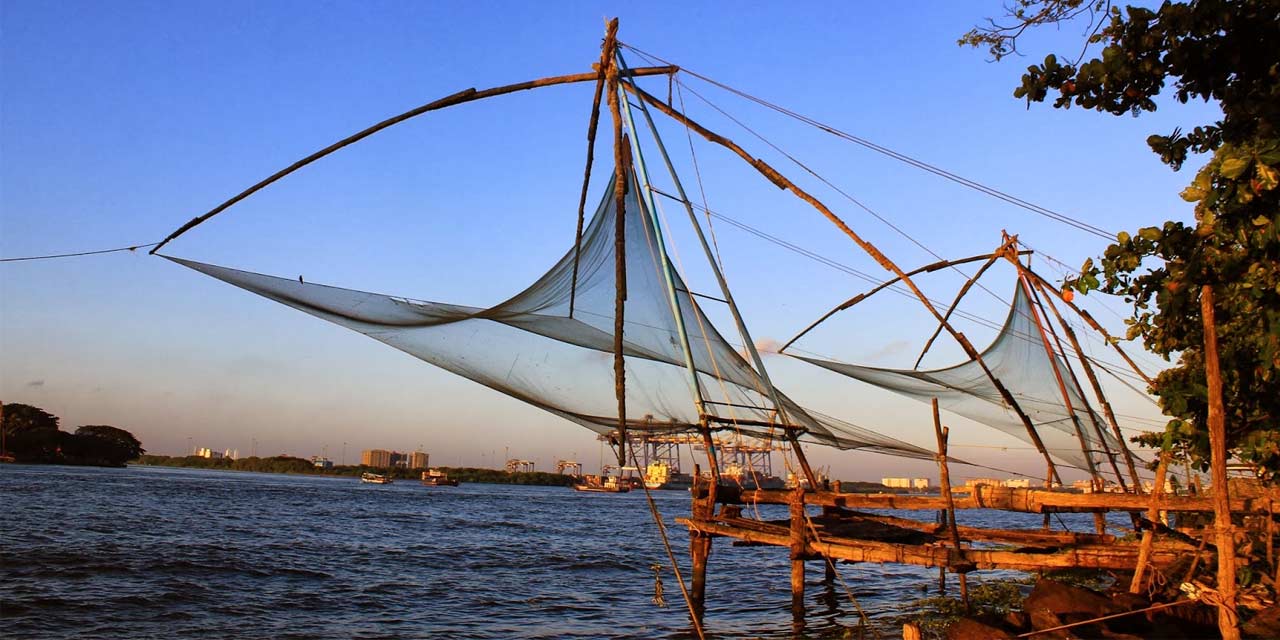
Often called Ernakulam, after the district in which Cochin lies, this city is a metropolis, and the most densely populated one in Kerala. Over the years, the influx of foreign traders have given Cochin its vibrant multicultural character. Alternatively known as Kochi, the city’s strategic location has played a part in making it a key port for trading. Kochi was a hub of spice trade since the 14th century, when the Arabs maintained good business relations with the local traders.
Fondly called ‘The Queen of the Arabian Sea’, Cochin became the first European colony after the Portuguese colonized it in the early 16th century. Soon after, the Dutch annexed this place, leaving its own cultural footprints in the sands of this part of Kerala. When finally the British Rule came into play, Cochin became a princely state of India.
Trade with China left Cochin with the famous Chinese fishing nets which have a unique mechanism wherein the bamboo rods (which hold the net) are lowered into the sea to catch a large number of fishes. These nets are not seen anywhere else in the country, and make great props for photographers who capture sunrises and sunsets.
The vibrant coastline of Cochin is strewn with rows of tall buildings. After nightfall, when these edifices are fully lit, they form a sparkling chain. This is the Marine Drive, a beachside boardwalk which is also open to vehicles. There are a number of shopping avenues for the fashion conscious.
3. Munnar
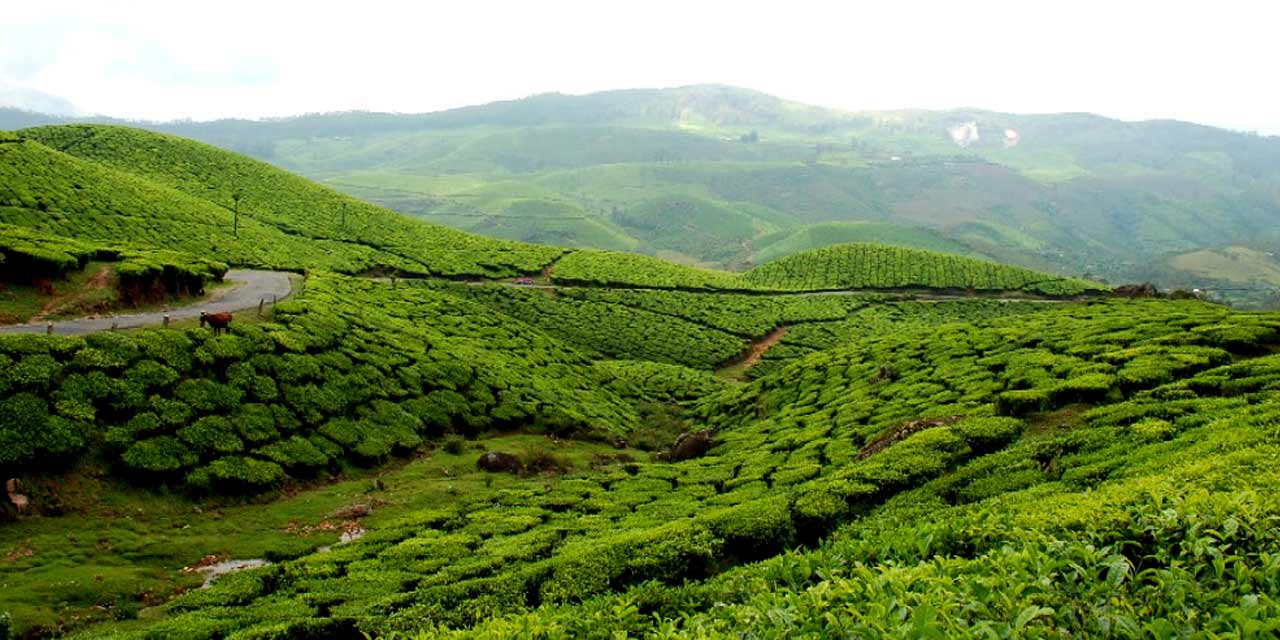
If any place can be called ‘The Kashmir of South India’, it is Munnar. This hill station is located at an altitude of 5,200 feet above the sea level. Not many are aware of the topographical fact that Munnar is the location where three rivers converge. These are Nallathanni, Mudhirapuzha and Kundaly. This is the reason behind the name, as “Moonar” means “three rivers” in Malayalam.
Famous for its tea plantations, Munnar used to have a lot of dense forests before the British urged the locals to convert most of these chocolate hills into tea gardens. Tea happens to be a cash crop, and the farmers aggressively began planting tea plants to be able to pay the high taxes in the British Raj era. There are a variety of teas cultivated upon the hills, most of which are export quality.
The highest point in Munnar, Top Station, is unsurprisingly very popular with tourists, who yearn for the views at an altitude of 1,700 metres. Top Station is located within the touristy part of Echo Point in Munnar. For those who are into flowers, don’t miss the sighting of the neelakurinji flowers which bloom only once in 12 years!
If you plan on staying longer, head to the Kundala Tea Plantations, maintained by Tata Tea. Apart from the lovely views of the tea crops, you can enjoy a round of golf on their sprawling golf course. You will also find the Kundala Lake nearby, and another one – the eponymous artificial dam.
4. Thekkady
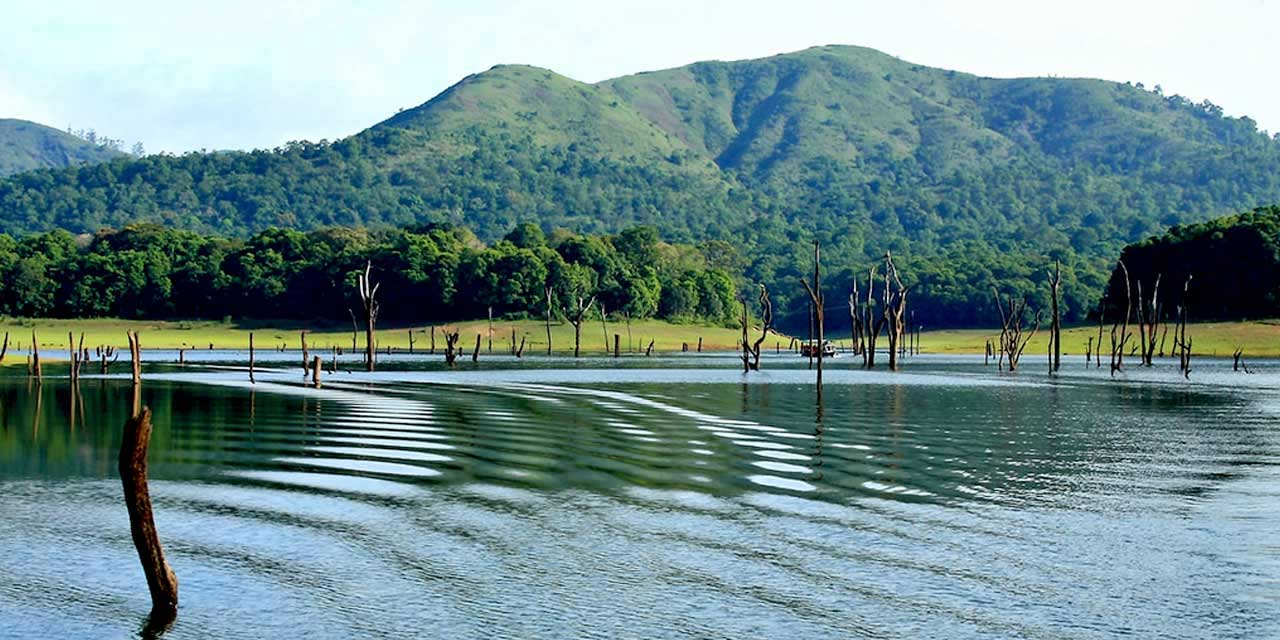
Boasting of gorgeous relief features, Thekkady is a town with diverse beauties that can be enjoyed. While it is mostly known for the Periyar Wildlife Sanctuary nearby, the conducive weather allows for spice plantations, flower parks and more.
Thekkady Rose Park is a lush botanical garden with an entry fee of INR 50 per head. If you have at least 3 hours in hand, you should book the Adventure package worth INR 400 which can be shared among friends or family who accompany you. You can indulge in games such as rope walking, spring bouncing, bungee jumping, boating, etc. All of the activities are kid-friendly, and can be safely enjoyed by all. The rose park has plenty of greenery and plants other than roses too. There are several installations here meant for photo-ops.
Elephant Junction Thekkady is a small area where tourists can get up close and personal with pet elephants who have been trained for entertainment. There are facilities for elephant trekking, which takes you on an elephant ride through the woods, commanded by mahouts. You can also try feeding the elephants or bathing them.
The most important site on your trip to Thekkady should undoubtedly be a visit to the Periyar National Park and Wildlife Sanctuary. This is an important tiger and elephant reserve, while also being a place for many endangered species of plants and other animals. Bordering the state of Tamil Nadu, the national park is spread over the Pandalam and Cardamom Hills. Take heart in the abundance of flora and fauna here: 1900+flowering plants, 170+ grass varieties, 140+ orchid species, 60+ mammal species, 260+ bird species, apart from reptiles, amphibians and fishes. One can trek through the forest trails, camp in the woods or even do boating in the beautiful Periyar Lake.
5. Thiruvananthapuram
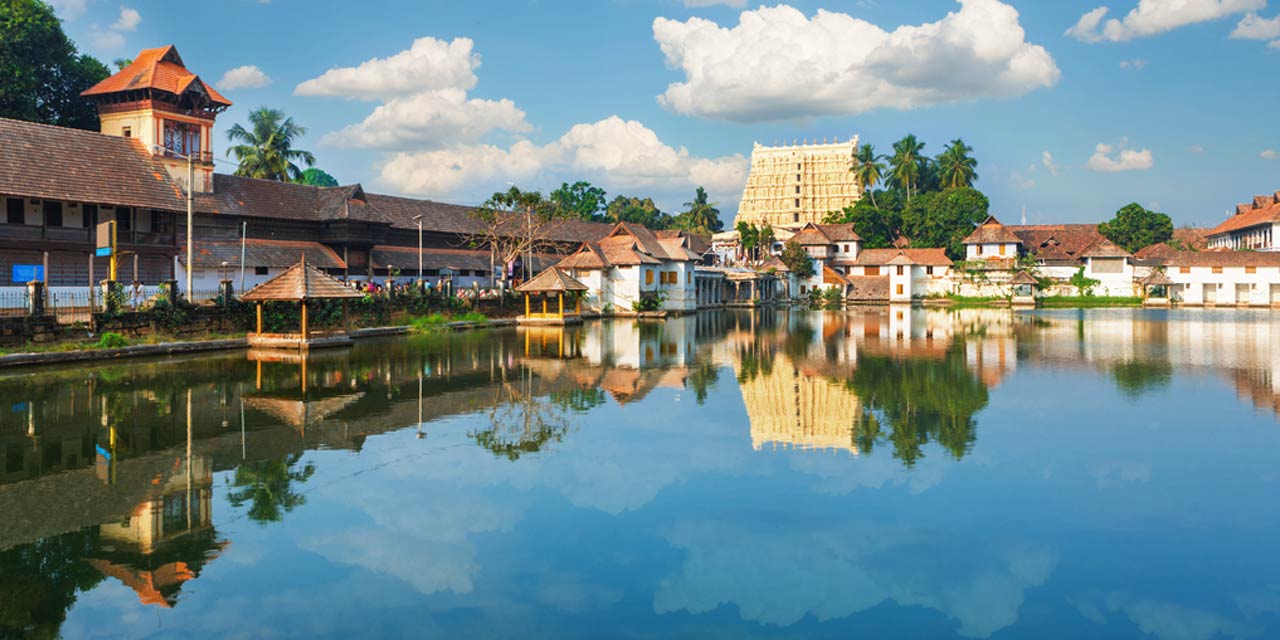
Thiruvananthapuram, also known as Trivandrum, is the capital of Kerala, and also the most populated city in the state. The place enjoys an attractive coastline while also having a stretch of undulating low hills. The Malayalam translation of the name of this city means “The City of Lord Anantha” (from thiru anantha puram). The wealth of greenery and public parks have earned Trivandrum the nickname of ‘The Evergreen City of India’.
Known primarily for its multitude of beaches and museums, Thiruvananthapuram also preserves some of its historical palaces. Do not skip Kuthiramalika, a palace built by one of the erstwhile Maharajas of the former Kingdom of Travancore in British India. Swathi Thirunal Rama Varma commissioned the construction of this Kerala-style palace, officially known as Puthen Malika, which translates to New Palace. Built with marble, granite, rosewood and teak, Kuthiramalika means ‘Mansion of Horses’. The palace was so named because of the carving of 122 wooden horses on the wall brackets of the sloping roof on the southern part of the mansion.
Another palace of note is the Kowdiar Palace which exudes royalty through each of its 150 rooms. Even though this is the private residence of the descendants of the royal family, visits can be arranged on request. You can also enter when the palace hosts exhibitions pertaining to the local culture, art, music or textiles. Built in 1934, the grand palace was a wedding gift given by the last ruling Maharaja of Travancore (Sree Chithira Thirunal Balarama Varma) to his sister, Maharani Karthika Thirunal Lakshmi Bayi.
Former summer retreat of the Travancore royal family, the Kanakakunnu Palace is open to all. Since the royal family was vegetarian, the palace was, once upon a time, used to serve non-vegetarian delicacies to diplomatic guests. Today, one can enjoy the India Dance Festival in the premises. Organized by the Department of Tourism, the fest runs from October through March each year.
6. Kozhikode
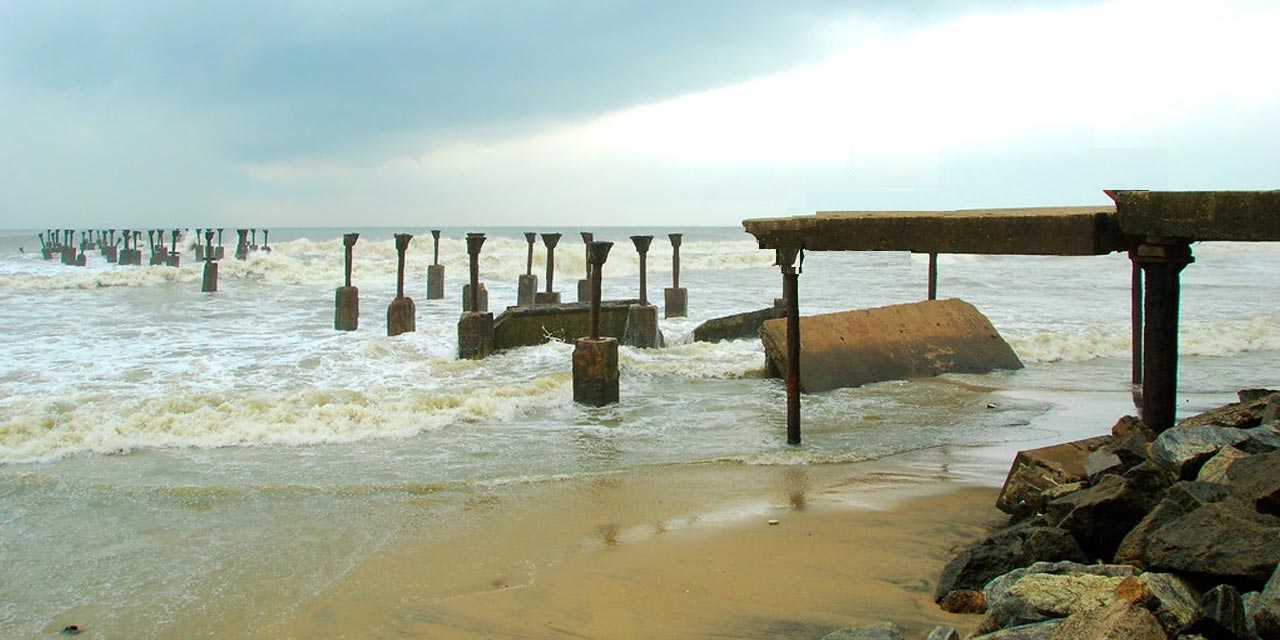
Renowned for its IIM (Indian Institute of Management), Kozhikode is also a versatile vacation destination. Formerly known as Calicut, the city was once an important spice trading location. Kozhikode was once ruled by the Samoothiri dynasty, and over the years, saw cultural and trade influx from the Arabs, the Portuguese, the British, the French and the Dutch.
Kozhikode offers plenty of beaches and museums to indulge both your body and mind. For the religious tourists, there are many temples and mosques strewn across the city. Check out Thali Maha Shiva Kshetram, Valayanad Devi Temple, Azhakodi Devi Temple, Thiruvachira Sree Krishna Temple, Varakkal Devi Temple, Thalikkunu Shiva Temple, Sreekanteshwara Temple and Niramkaitha Kotta Temple to see how Kerala architecture was used in shrines.
Mosques such as Kadalundi Nagaram Masjid and Idiyangara Mosque show typical Islamic architecture, the only exception being Mishkal Mosque which has the sloping thatched roofs, as seen on the Hindu temples here.
Beach fans should head to Kozhikode Beach (also known as Calicut Beach) which has stones jutting out of the sand, leading to an intriguing formation, great for photo-ops. The beach also has a park called the Lion Park, apart from an aquarium to entertain the kids. Kappad Beach is another option with a rocky shoreline and plentiful public amenities. To skip the crowds, try the Bhatt Road Beach or the Kamburam Beach which is a little bit offbeat and much quieter. For activities such as boating, Ancia Beach is a good option.
7. Fort Kochi
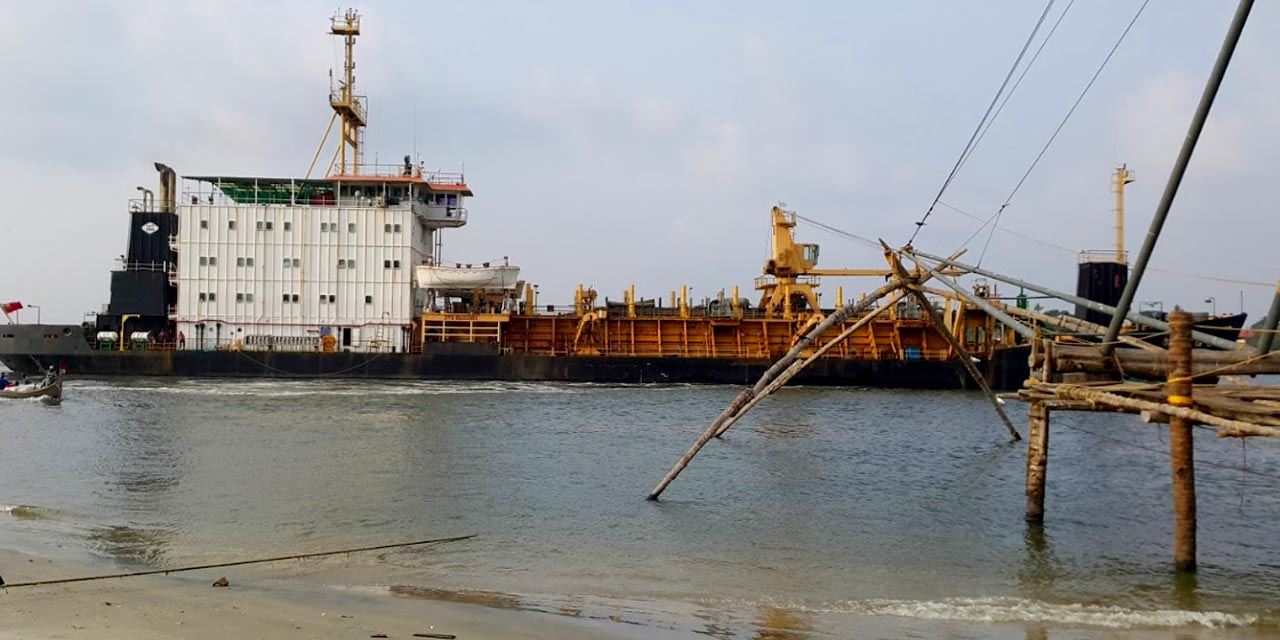
The art capital of Kerala, Fort Kochi is just a small part of the larger area of Cochin. This place is known among thriving artists the world over for its Kochi-Muziris Biennale. The contemporary art festival which begins in December and runs until the end of March the following year, is the largest of its kind in all of Asia. During the biennale, Fort Kochi sees most of its art galleries, cafes, exhibition halls and public spaces swamped with art aficionados, struggling painters and even amateur artists who spend several months exploring the art scene of Kerala and beyond.
Apart from art, Fort Kochi has the perfect backdrop for photographing the Chinese Fishing Nets or Cheena Vala, as it is locally known, which are used by the local fisher folks. Catering to the young, backpacking crowd, Fort Kochi offers plenty of home stays, hostels and other types of shared accommodation for budget travellers. Nevertheless, some of the most refined luxury hotels are also present here for the well heeled and comfort-conscious.
Fort Kochi was previously known by various names such as Cochim de Baixo, West Kochi, Old Kochi and Lower Kochi. The northern stretch of the coast of Fort Kochi can easily be explored on foot if you have the entire day to spare. Begin at the Indian Naval Maritime Museum which has exhibits on the naval technology, history, communication systems, uniforms, ship models and more.
As you walk along the Fort Kochi Beach, venture inland to see the Indo Portuguese Museum and the adjoining Bishop’s House which is a church. This doesn’t take very long to visit since there are not too many exhibits inside. However, the garden complex can make for a nice walk. Further ahead, the Dutch Cemetery, which is in ruins, gives an insight into the design of gravestone styles of the Dutch.
Right on the Mahatma Gandhi beach, one can spot the ruins of Fort Emmanuel or Fort Manuel which was the first Portuguese fort in the entire continent. Named after the then King of Portugal, Manuel I, one can see the remnants of an old cannon. Somewhere along the inroads, you will find St. Francis CSI Church which is one of the oldest European churches in the country.
Head to Vasco da Gama Square and follow the promenade to the Indo-European style Bastion Bungalow. You might want to venture away from the coast to pay a visit to the imposing Santa Cruz Cathedral Basilica, one of only nine in Kerala. This heritage Portuguese church sports gothic architecture.
For street-style shopping, stroll through the bustling Princess Street or for a quieter experience, go to the Strings Museum of Musical Instruments. Greenix Village is another amazing place for enthusiasts of Kerala’s traditional dance forms such as Kathakali, Mohiniattam, Kalaripayattu (martial arts and dance) and indigenous puppetry. They even have an ornate Kathakali Museum where different characters, poses and instruments are kept on display.
8. Munroe Island
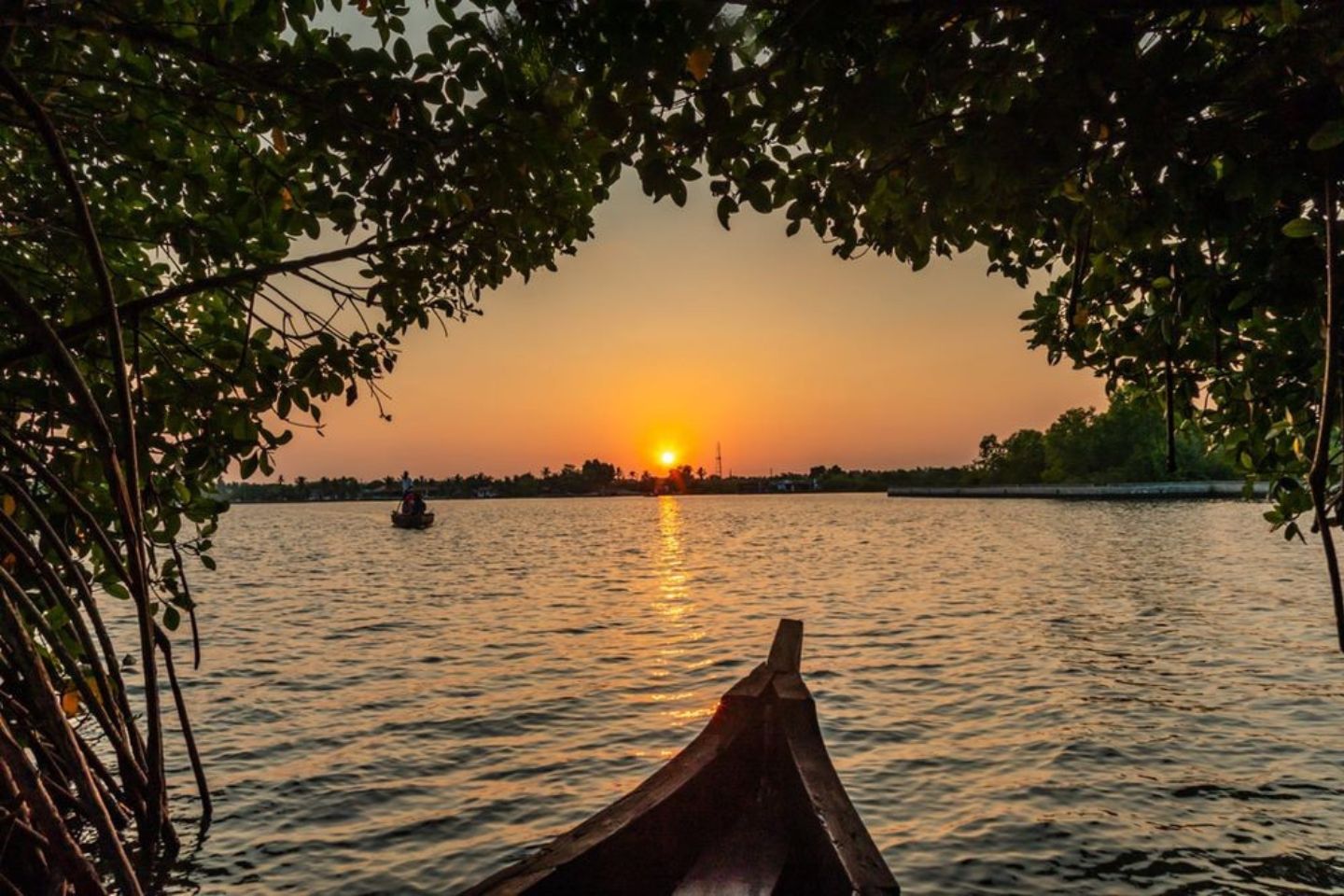
Spread over 13.4 square kilometres, Munroe Island is actually not just a single island but a cluster of eight. These islets are also called Mundrothuruthu. What makes Munroe Island so interesting is the fact that it is an inland group of islands set amidst the Ashtamudi Lake and the Kallada River which is also called Punalurar. Ashtamudi is a backwater lake and its name literally translates to ‘eight braids’ in Malayalam.
Munroe Island is named after General John Munro who was a Scottish soldier. He had also served as Resident and Diwan of the former princely states of Travancore and Cochin in the early 19th century. He was the administrator who oversaw the reclamation works which resulted in the formation of the eight islets. Playing on the famous tagline ‘God’s Own Country’ which is used for the state of Kerala, Munroe Island is sometimes referred to as ‘God’s Own Island’.
Most of the village locals make their livelihood by making coconut coir, and it is possible to watch the entire process of coir retting and coir weaving. Tourists can also enjoy demonstrations of fishing and prawn feeding. While natural features such as the mangroves, the avifauna, the backwaters, the lagoons, the shores and the coconut farms are appealing, one can also look forward to boat rides through the narrow canals.
An activity which travellers find entertaining is the famous Kallada Boat Race or Kallada Jalotsavam which is held 28 days after the celebration of the Keralite festival of Onam. Organized on the Kallada River at Munroe Island, the boat race is a great place to watch a rowing race among large traditional boats which house almost a hundred oarsmen each. Munroe Island is said to be gradually submerging into the waters, so you’d better not miss it before it disappears completely.
9. Wayanad
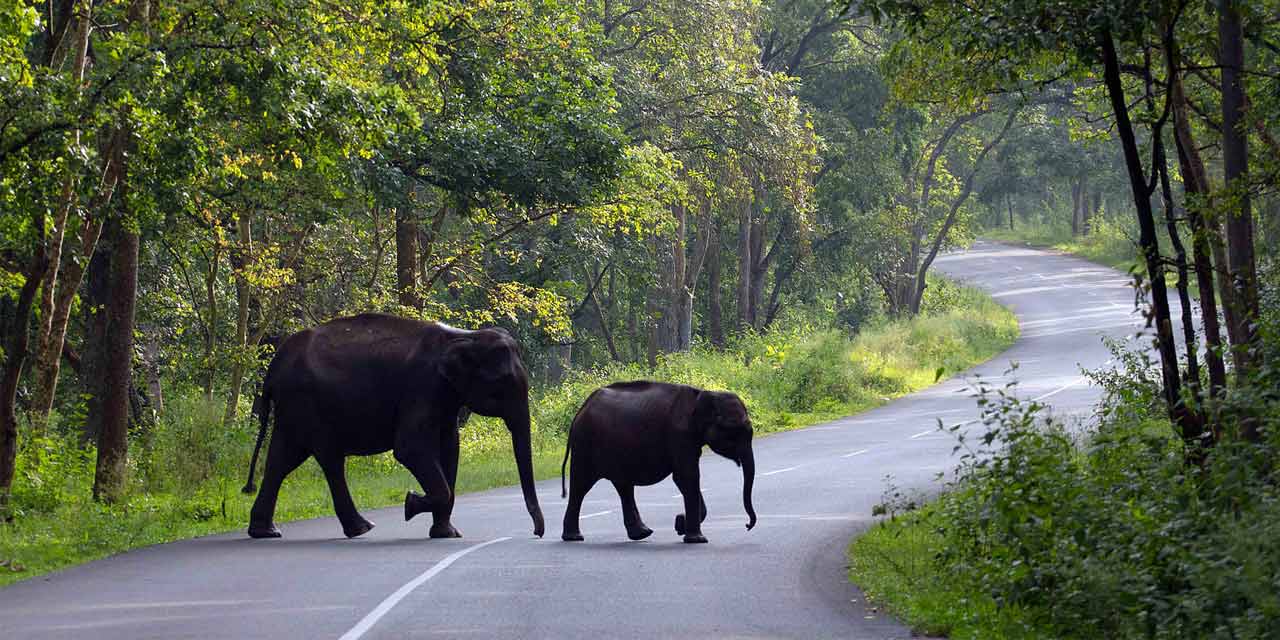
Located in the North Eastern part of Kerala, Wayanad is literally ‘the land of paddy fields’. In fact, its name in Malayalam ‘Vayal Nadu’ translates to exactly that! The district is part of the Western Ghats and has varying altitudes in the range of 700 metres to 2100 metres. This makes Wayanad a great hill station vacation destination.
Blessed with abundant wildlife, the Wayanad Wildlife Sanctuary, which is part of the Nilgiri Biosphere Reserve, offers a good dose of adventure for animal enthusiasts and lovers of the wild. This animal sanctuary covers four mountain ranges, Tholpetty, Sulthan Bathery, Kurichiat and Muthanga. The dense teak forests are a haven for tigers, deer, elephants and the Indian bison. Birdwatchers should wait in anticipation for the calls of peafowl, woodpeckers, owls and babblers.
One of the towns in this district of the Southern Deccan Plateau which must be visited is Kalpetta. Hikers can look forward to the gorgeous views from the Chembra Peak. Like icing on the cake, the Neelimala Viewpoint is where most travellers flock for breathtaking panoramas of Wayanad’s forests, mountains, valleys and waterfalls. The religious tourist might find the hilltop Ananthanatha Swami Jain Temple worth a stroll, mainly for the coffee plantations which surround it.
A mesmerizing island complex that remains Wayanad’s open secret is Kuruvadweep. Also known as Kuruva Island, this is actually a river delta spanning 950 acres in area. Kuruvadweep is a group of three protected islands which are not inhabited but see a lot of tourist influx. Entry is restricted but fun once you discover you will be commuting on handmade flat rafts, if not fibre boats. Covered by dense evergreen forests, the island complex has a treasure trove of indigenous herbs, birds and beautiful orchids.
10. Jew Town
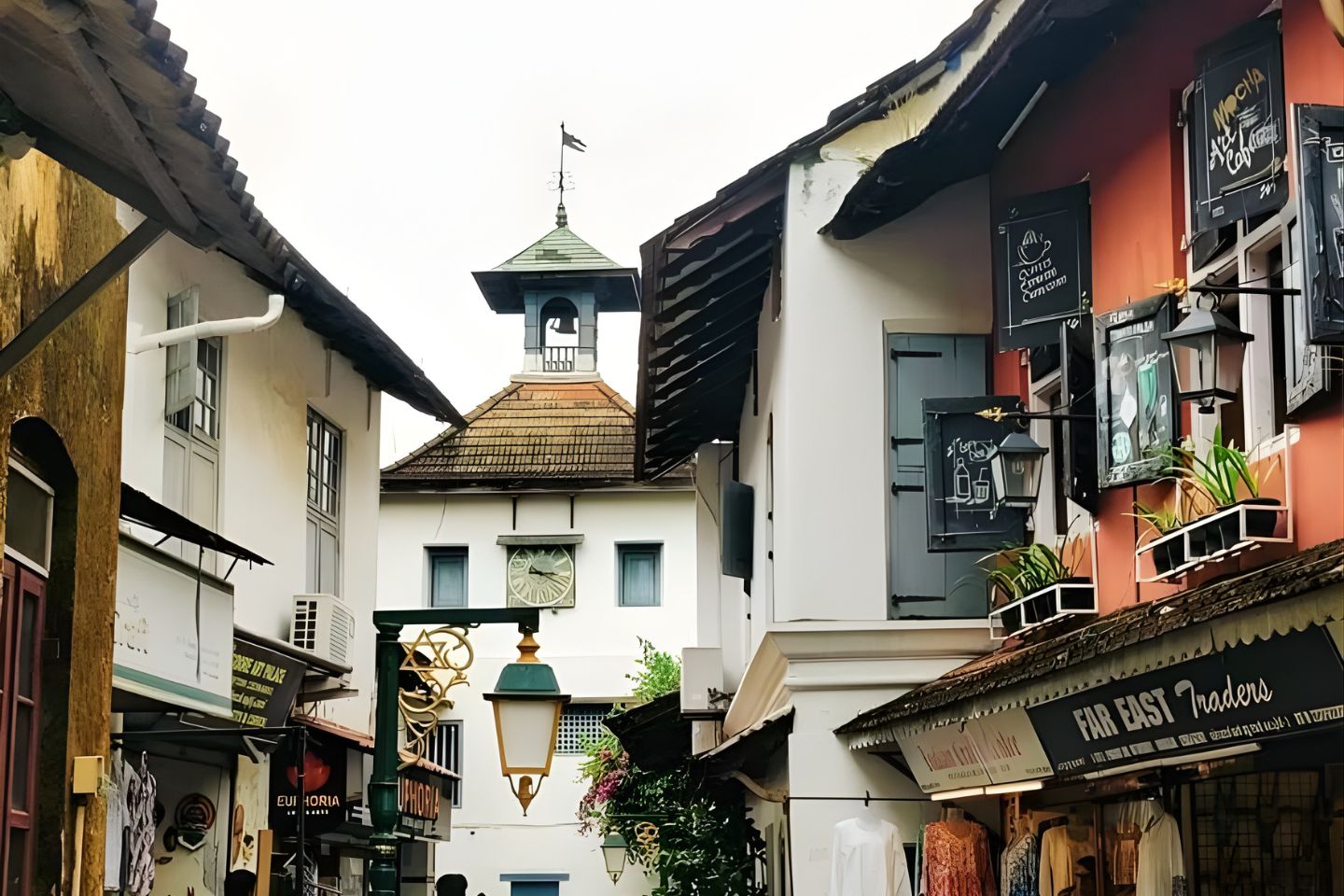
Once home to the state’s Jewish community, Jew Town, today, is a shopping favourite. On Jew Town Road, several small shops set up their stalls of food items, souvenirs, traditional fabric works, antiques, paintings and crafts. Even some ethnic Jewish items are up for sale at some curio stores. There are also a few cafes which offer traditional Israeli dishes such as shakshouka. Visit Antique Museum Kochi for a glimpse or traditional clocks, pottery, statues and other collectibles.
You will spot the 16th century Paradesi Synagogue in the centre of the mishmash of little shops. Built in 1568, this is the oldest synagogue in all of the Commonwealth Nations which is still active. Paradesi Synagogue is also one of only eight synagogues constructed by the Malabar Yehudan or Yehudan Mappila people. The name ‘Paradesi’ means ‘foreign’, alluding to the foreign Jewish influence.
11. Kovalam
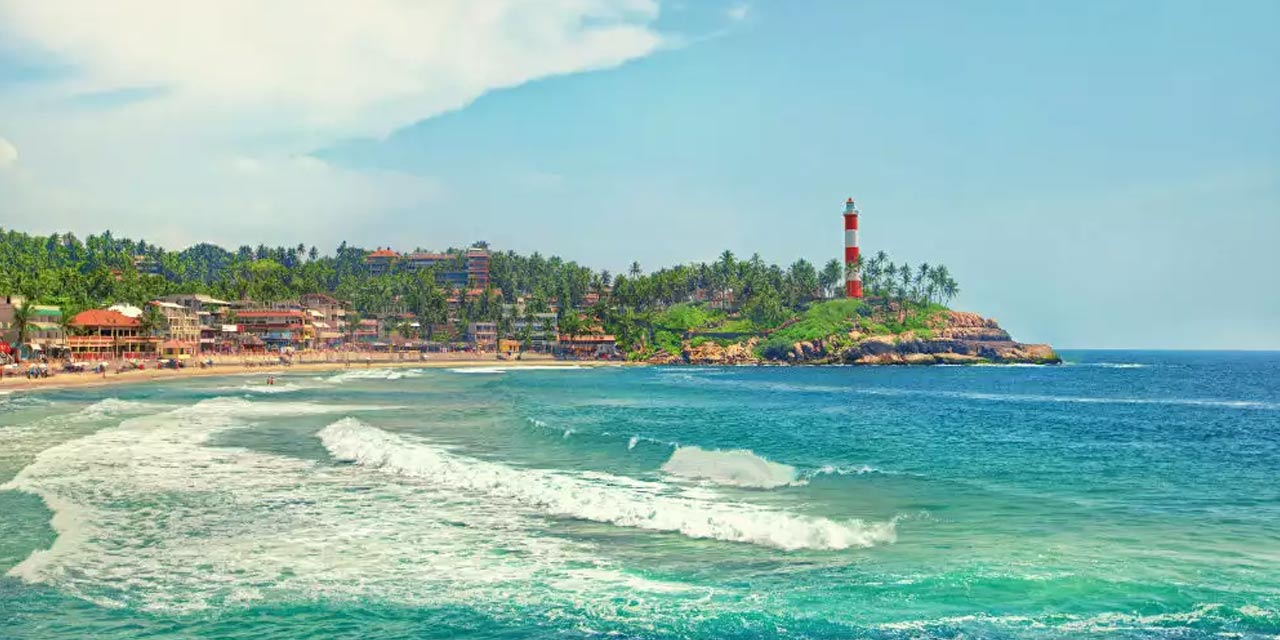
Known over the world over for its eponymous beach, Kovalam is but a small coastal town in the southern part of Trivandrum City. The name means ‘coconut grove’ in Malayalam, accurately representing the abundance of coconut palm in the area. Once an idyllic fishing village, Kovalam is famous today for its Ayurvedic treatments, spiritual and health retreats and a number of beach resorts which facilitate vacationing close to the beaches.
The Kovalam Beach is a 17 km stretch of four beaches which are partitioned by outcrops. The crescent formation on the shoreline is visible from a high-rise building. The beaches which contribute to the coastline are Eve’s Beach (known as Hawah Beach in the local language), Lighthouse Beach, Ashoka Beach and Samudra Beach.
The Lighthouse Beach is so named after the Vizhinjam Lighthouse which stands on its sands. Built at an altitude of 35 metres above the sea level, atop the Kurumkal hillock, the lighthouse is an attractive landmark. Measuring 118 feet in height, Vizhinjam Lighthouse is painted in stripes of red and white. Most of the other beaches are places for the local fishermen to go about their fishing activities. One can watch them in action to kill time though.
If you are not so much of a beach bum, Kovalam has other attractions to keep you interested. Explore the Halcyon Castle, a beach resort built in 1932 for the royalties of the erstwhile princely state of Travancore. Temple fans can visit the Vizhinjam Rock Cut Cave Temple and the Thiruvallam Parasurama Temple.
If you are into art, head to the Kovalam Art Gallery to gaze at the inspiring compositions on display. The profusion of water bodies in and around Kovalam (such as the Vellayani Lake and Karamana River) have ensured the need for dams. Plan a trip to the Aruvikkara Dam and Neyyar Dam, and also enjoy the sunset from Valiyathura Pier.
12. Bekal
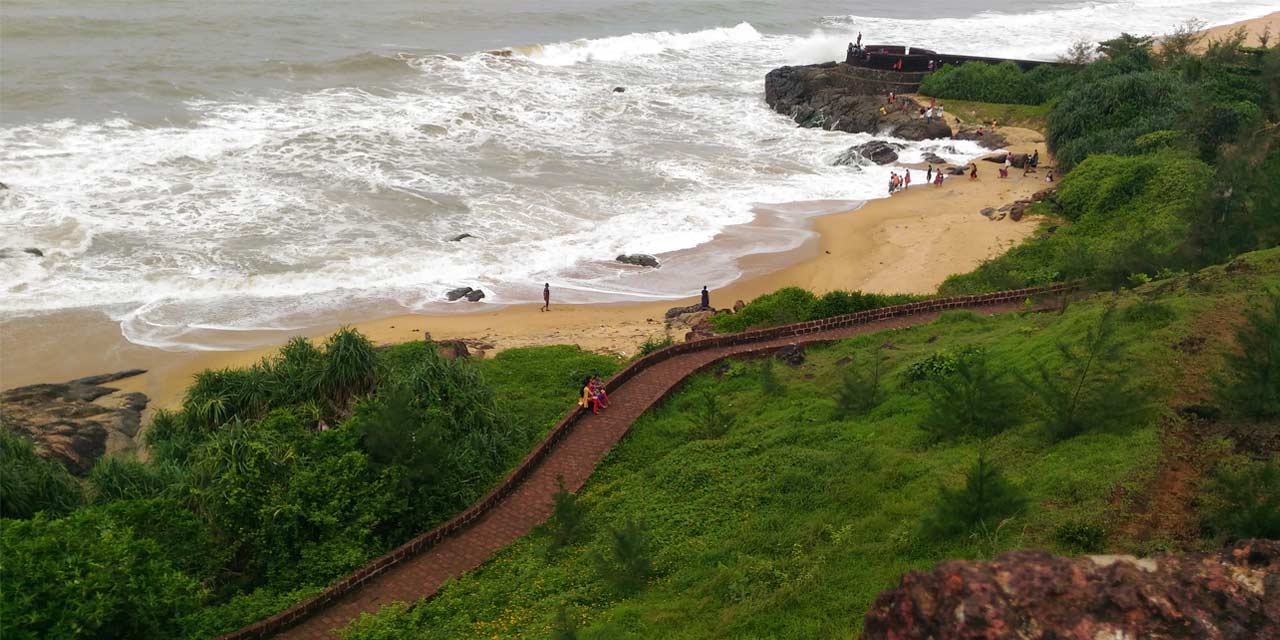
Characterized by hills and backwaters, Bekal invites tourists to explore its coastal attractions. No trip to this town is complete without a visit to the Bekal Fort. This mid-seventeenth century fort was built by Shivappa Nayaka, the ruler of the temple town of Keladi, in 1650 AD. With most of its fort wall touching the waters of the Arabian Sea, the fort commands an area of almost 40 acres.
Some interesting features of the Bekal Fort are a set of underground steps leading to the fort, a water tank, an observation tower and a magazine (storage area for arms and ammunition). This fort provides a nice vantage point to see the towns of Bekal, Kottikulam, Kanhagad, Uduma and Pallikkara.
Another fort worth a visit is the Chandragiri Fort which was built in the 17th century AD. Spread over 7 acres, the fort stands 150 feet above the sea level. Located by the Payaswini River, the ruins of the Chandragiri Fort provide insights into the ancient kingdoms of Thulunadu, Kolathunadu, Vijayanagara and Keladi Nayaka. Architecturally, the fort has a simple square layout.
Forts aside, Bekal has a couple of Hindu temples which sees a lot of devotees rushing to offer their prayers. Trikkannad Tryambakeshwara Temple and Sree Madiyan Koolom Temple see a lot of footfalls. The latter, said to be 500 years old, is home to some vintage wooden carvings. Flaunting the traditional Kerala style of architecture, Sree Madiyan Koolom Temple has ceilings and pillars which enthral visitors.
When in Bekal, you cannot miss its beaches, especially since it’s a coastal town. Do plan a visit to Bekal Beach and the surrounding park, Chembirika Beach, Kappil Beach, Pallikkara Beach Park, Kasaba Beach Park and Uduma Beach.
13. Mattancherry
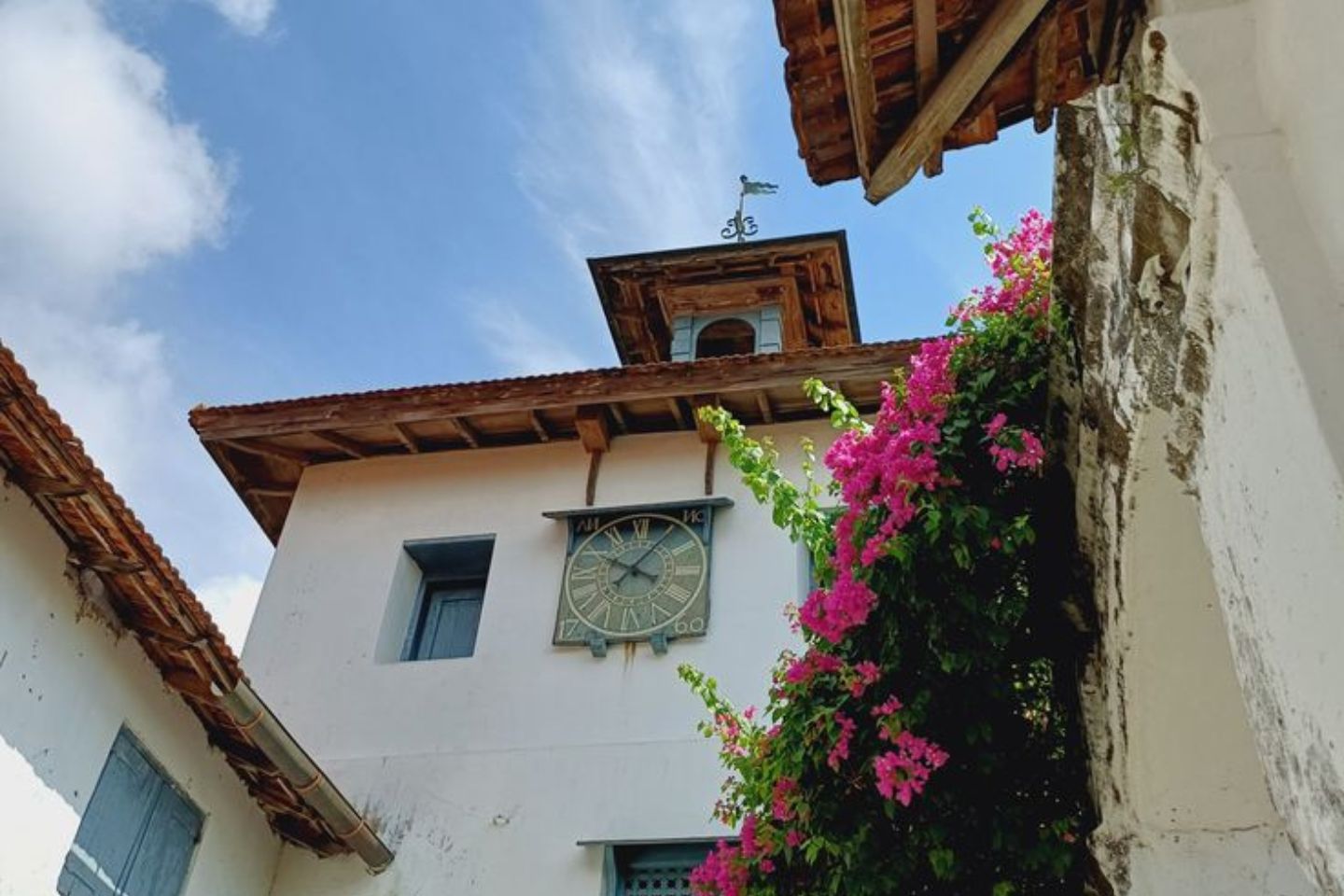
Also known as Cochim de Cima or Upper Kochi, Mattancherry is one of the traditional neighbourhoods of Kochi. Mattancherry Palace happens to be the most famous attraction of this area. Also known as Dutch Palace, this is actually a Portuguese palace and museum with the traditional Kerala architecture on its exterior. The museum exhibits the life of the kings of Kochi through paintings and murals. The compound has plenty of greenery and also a pond, adding to the character and charm of the place.
Other sightseeing options are the Jeevamatha Catholic Latin Church, St. George Orthodox Koonan Kurish Old Syrian Church and International Tourism Police Station and Police Museum. At the latter, one can learn about the methods used by the Kerala Police, look at their arms, medals, photographs, uniforms and more.
14. Poovar
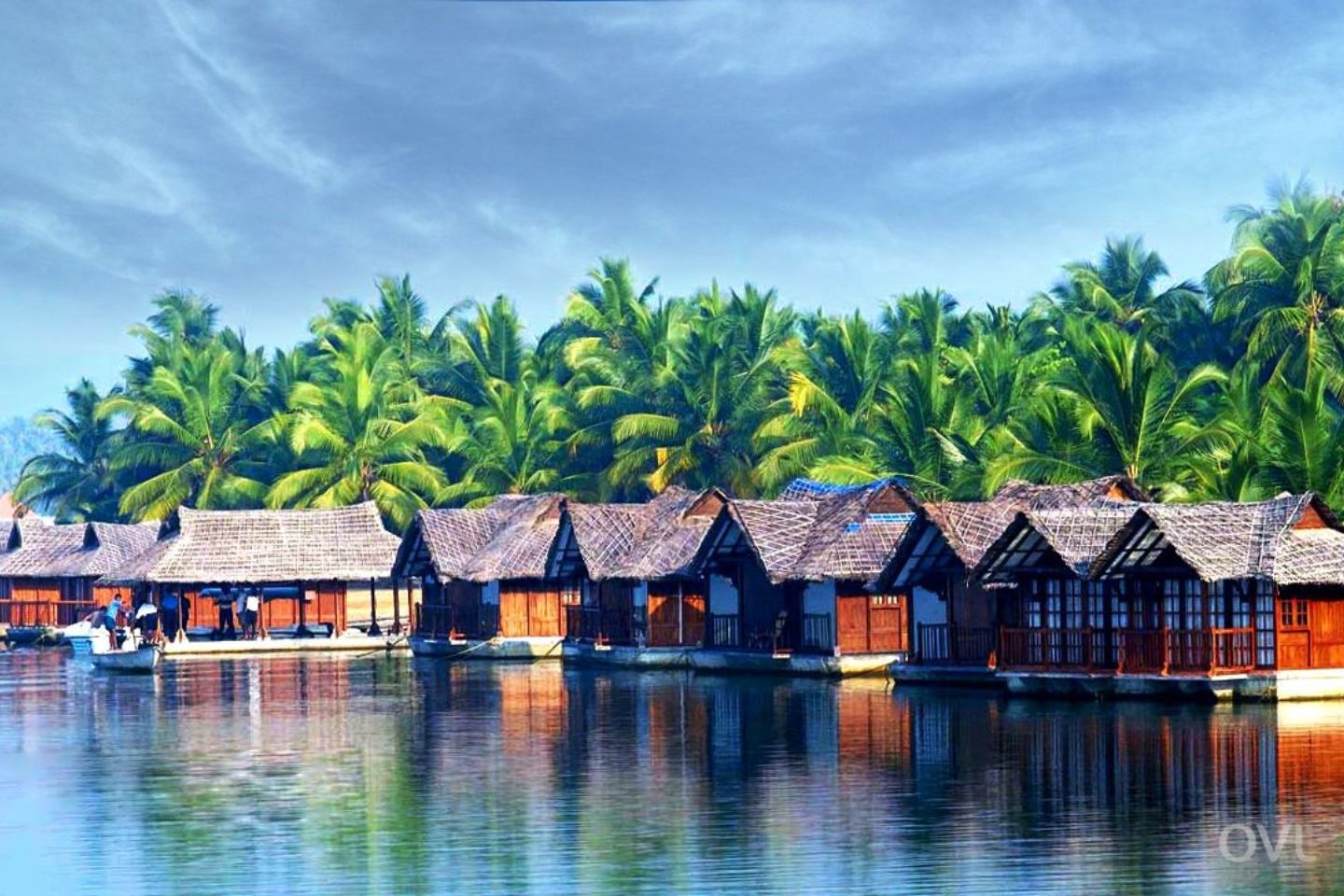
Almost at the southern tip of Kerala, Poovar is a village in the Neyyattinkara taluk. Home to a huge concentration of 5-star properties, this hamlet is a popular tourist destination in south Kerala. The name Poovar means ‘flower-river’ in Malayalam (from ‘poo’ and ‘var’), given by the 18th century Travancore king Marthanda Varma after he witnessed the lovely flowering trees by the Neyyar River which flows through this tehsil.
There are diverse sightseeing options in Poovar which range from beaches and museums to temples and mosques. Check out the Pozhiyoor Golden Beach which is relatively less crowded and enjoys nice sea breeze and sunsets, which make the sands shine like gold. To try boating, head to the Pozhikkara Beach. For some variation in the terrain, explore the Azhimala Cliff and its adjoining beach which is strewn with boulders. A slightly less crowded choice is the Adimalathura Beach which is slightly far from all the popular beaches but worthy enough for a visit, thanks to the crabs which can be spotted here.
Activities not to be skipped in Poovar are boating in the pristine backwaters, a trip to Elephant Rock, a visit to the colourful Aazhimala Siva Temple by the Arabian Sea and another one to the Chenkal Maheswaram Temple which boasts of the iconic Kerala-style thatched sloping brick and an enormous statue of the Shivalinga. For a dash of greenery, go to the Kuzhipallam Botanical Garden which is spread over 40 acres, and home to hundreds of pretty flowers, some of which are also for sale.
15. Kollam

This beauty on the Malabar Coast offers a lot of beaches for those who desperately need some Vitamin-Sea. Formerly known as Quilon, the city of Kollam borders the Laccadive Sea and calls the Chinnakada Clock Tower its main landmark. This port city was once called ‘Coulao’ by the Portuguese traders who had settled here. The name ‘Kollam’ is thought to have come from Sanskrit in which it means ‘pepper’. Interestingly, apart from spices, this city is famous for its production of cashew and coconut coir.
At the very centre of Kollam is the Ashtamudi Lake where one can spot the Chinese fishing nets which are basically shore operated lift nets introduced to Kerala by the ancient Chinese traders. This palm shaped lake also lets tourists relax in luxury houseboats as they take a ride through the narrow canals.
There is no dearth of beaches in Kollam, the most renowned being the Kollam Beach which is formally called the Mahatma Gandhi Beach. This beach is equipped with a lifeguard outpost and is considered relatively safe. This has also contributed to it being a favoured destination wedding option. Other beaches of note in this city are Thirumullavaram Beach, Thangassery Beach (which also has the eponymous lighthouse painted in red and white spiral stripes), Eravipuram Beach, Thirumullavaram Beach and Mayyanad Beach.
Architecture and history enthusiasts can consider walking past the Thevally Palace or Thevalli Palace built in the early 19th century. Located on the Thangassery Beach, the Tangasseri Fort is a striking example of Portuguese architecture, albeit in ruins, with its exposed brick walls. The fort is called Fortaleza da São Tomé in Portuguese and alternatively referred to as St. Thomas Fort or Fort Thomas. Sporting traditional Kerala architecture, the British Residency Bungalow is a much-used landmark and also serves as the Government Guest House. Another heritage building not to be missed is the Cheena Kottaram or China Palace which flaunts Indo-Saracenic architecture which is a mixture of European, Indian, Moorish and Islamic styles.
16. Thrissur

The landscape of Thrissur is dotted with ample temples and churches which are not just places of worship here, but also architectural examples to be studied and explored. Formerly called Trichur, this city is colloquially called ‘God’s Own Town’. Apart from shrines, there are also religious festivals that attract tourists to Thrissur. This cultural capital of Kerala was, once upon a time, the administrative capital of the medieval Kingdom of Cochin.
It is not surprising that Thrissur should have so many Hindu Shiva temples, given that its very name means ‘The city with three Shiva temples’ when its long-form Malayalam and Tamil name ‘Thri-Shiva-Perur’ is considered. Even in Ancient India, the city was known as ‘Vrishabhadripuram’ which means ‘Kailash of the South’, Kailash being the mythological abode of the Hindu deity Shiva.
The most popular Shiva temples which you can put on your list are Vadakkunnathan Temple which also tells the story of Mahabharata through murals, Punkunnam Shiva Temple where along with Shiva, Parvathy, Ganesha, Partha Sarathi and several other idols are worshipped, and Trikkur Mahadeva Temple, a rock cut cave which was used not only by Hindus but also Jains and Buddhists for meditation.
The spread of Catholicism has ensured the construction of a lot of ornate churches and cathedrals in Thrissur. You might want to visit Basilica of Our Lady of Dolours which is built in the splendid Indo-Gothic style of architecture, spread over 25,000 square feet, the Bible Tower which, at 42.5 metres, happens to be the tallest church tower in all of Asia, and St. Thomas Syro-Malabar Catholic Church which commemorates Saint Thomas who was one of the apostles who preached Christ in India in 52 AD.
17. Palakkad
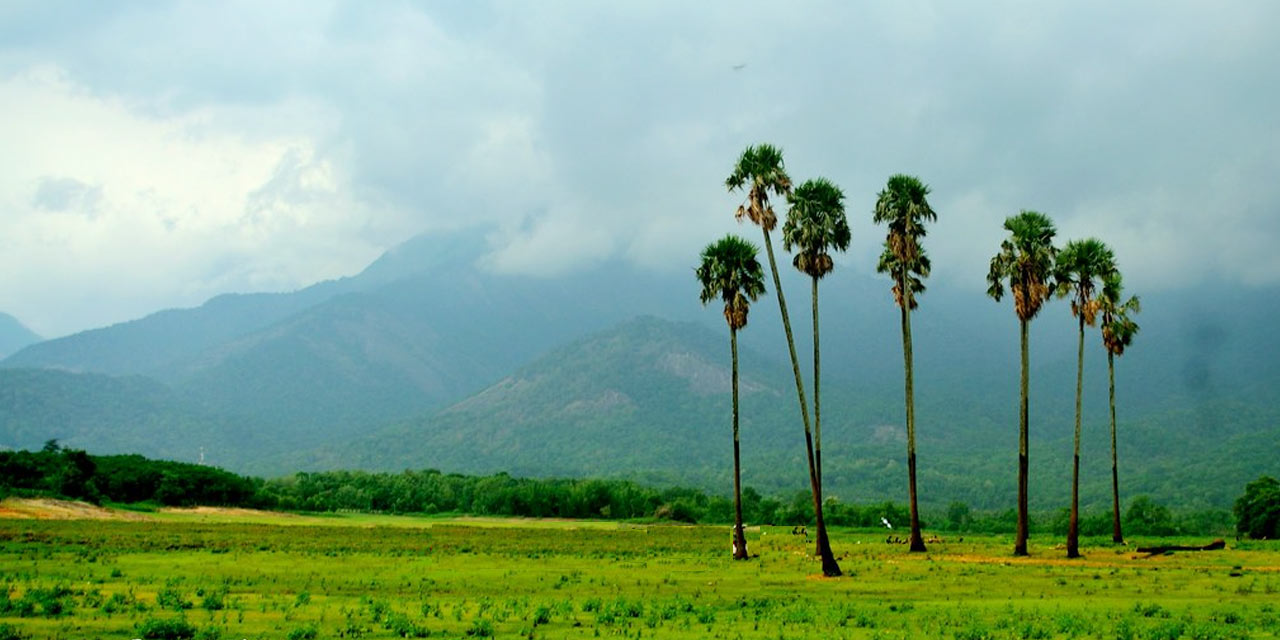
Fondly called ‘The Rice Bowl of Kerala’, the city of Palakkad is also known as Palghat. The meaning of the name in Malayalam is an oxymoron, ‘barren forest’ from the words ‘Pala’ and ‘Kadu’. This city has a centuries old fort, a host of temples and a lot of parks to keep travellers occupied.
The first on your list of places to see in Palakkad should be the Palakkad Fort complex. Dating back to the 18th century, the fort has a moat dug around it as a measure of protection against attacks. There is a spacious multi-use ground bordering the fort, called Kota Maidanam or Fort Maidan, where you might be able to catch an exhibition or a cricket match.
For a breathtaking view of the entire city, head to Malampuzha Dam built to stem the flow of the Malampuzha River. Get copious views of the hills of the Western Ghats which can be seen behind the 355 feet high dam. The river that is barricaded by this dam is a tributary of Kerala’s second longest river, Bharathappuzha. Stop by at the Malampuzha Rock Garden for a green treat of plants and artistically carved rock murals and sculptures. Nearby, you can also take in the soothing sights at the Kava View Point.
Palakkad is full of Hindu temples with traditional architecture and ornate décor. Manapullikavu Vela, Vadakanthara Sree Thirupuraikkal Bhagavathi Temple (which is lavishly lit up after dark), Sree Chinmaya Guruvayurappan Temple, Chittur Kavu (with an idol measuring 6 feet in height) and Thiruvalathur sree Randumoorthi Temple should be on your radar.
18. Varkala
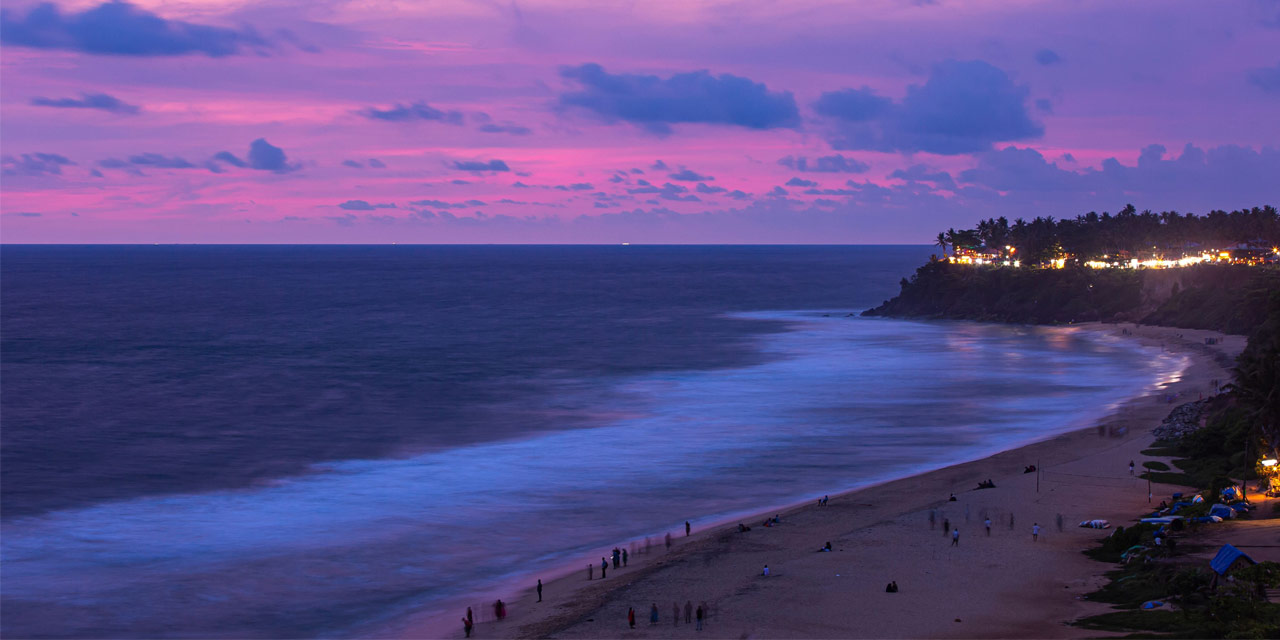
Home to one of the most stunning cliff beaches in the world, Varkala offers more than just the Arabian Sea and the golden sands. The story behind the name of this Kerala town is mythologically entwined. Varkala is a degenerated form of the word ‘valkalam’ which means ‘loin cloth originating from the bark of a tree’. When the Hindu sage ‘Narada’ was found a sinner, he threw out his valkalam or loin cloth out of shame, and this covered the entire village.
If sunbathing is on your wishlist, you will love Varkala Beach, which is also known as Papanasam Beach. Relax at a beachside restaurant after swimming by this picturesque beach. Varkala sandstone cliff wears a striking red colour due to the inherent properties of the rock. Indulge in seaside and cliffside adventure sports such as paragliding or just take a leisurely stroll through the Varkala Promenade which is lined by pretty restaurants and cafes.
Further along, Kappil Beach and Lake provide a lovely enclosure for boating and watching the sunset. If you can also make your way to Paravur, make use of its inland waterways and the eponymous lake or just soak in the sun on its beaches.
If you would rather stay confined to Varkala, head out to watch the 150-plus year old Varkala Tunnel which is almost 924 feet long. Take a boat ride under the tunnel and experience your very own Venice in the hinterlands of Kerala! Not very far from this, a lighthouse calls all visitors to attention.
19. Kumarakom
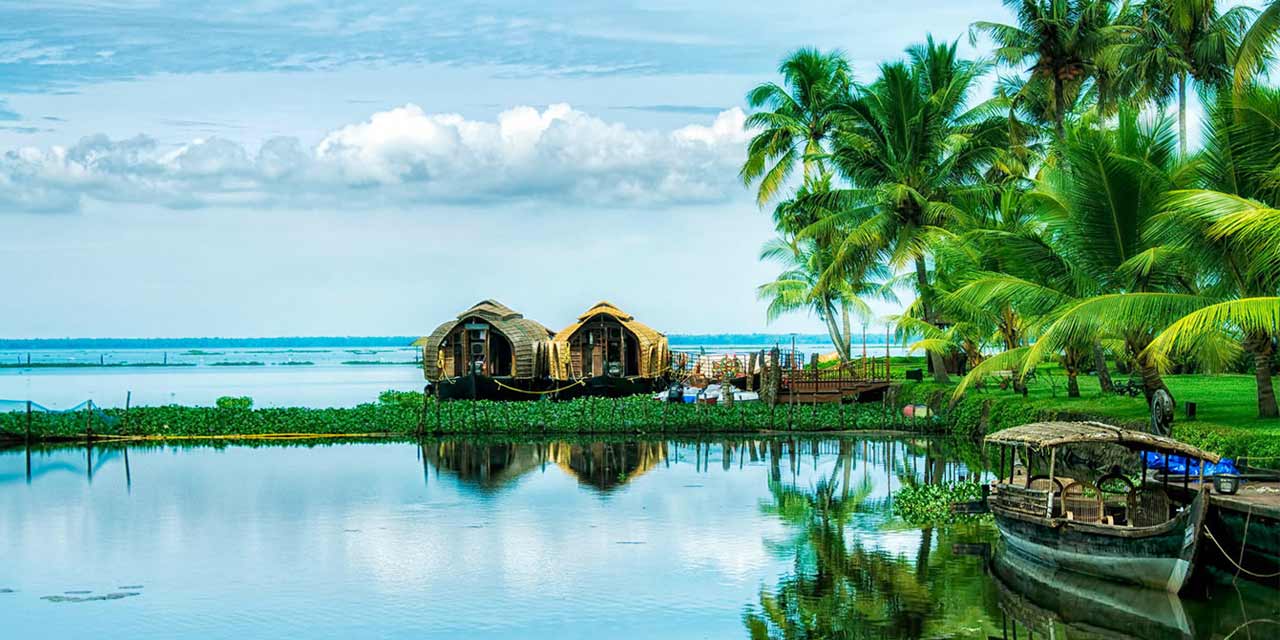
A network of backwater canals and clean beaches put Kumarakom on the tourist map of Kerala. Located within the Vembanad Lake, this little village is also home to a host of migratory birds. Recognized for its responsible tourism initiatives, Kumarakom makes a great choice for luxury backwater vacations.
A houseboat ride through the canals of this hamlet is one of the highly recommended ways to spend your time here. If you happen to be a birding enthusiast, spare a few hours for the Kumarakom Bird Sanctuary. Alternatively known as the Vembanad Bird Sanctuary, this avian paradise can be reached through a short boat ride, since it is located on the banks of the Vembanad Lake.
The sanctuary was initially a rubber plantation which was later repurposed by George Alfred Baker, after whom the place was previously known as Baker Estate. It is possible to see the Meenachil River from here before it pours out itself into the Vembanad Lake. Kumarakom Bird Sanctuary is spread across 14 acres of area, and it delights visitors with the calls of water birds such as geese, swans and ducks, owls, brahminy kites and darters. Larks and flycatchers can also be sighted during the migration season.
Those fond of sculptures should not miss the Bay Island Driftwood Museum where artefacts made of driftwood are put on display. Driftwood is essentially the pieces of wood that are washed ashore by the drift of a river or the waves of a lake. This museum, housed in a cylindrical building, also exhibits driftwood fossils, apart from modern art. The artefacts include replicas of animals, birds, amphibians, reptiles, fishes and even elaborate show pieces and dainty figurines.
The Vembanad Lake itself is an attraction in Kumarakom. You might want to visit the Thanneermukkom Bund which is an artificial patch of green land in the middle of the lake, put there in order to prevent the mixing of salt water into the other side of the lake, and also to alleviate tides which can make boating harder.
20. Kasaragod
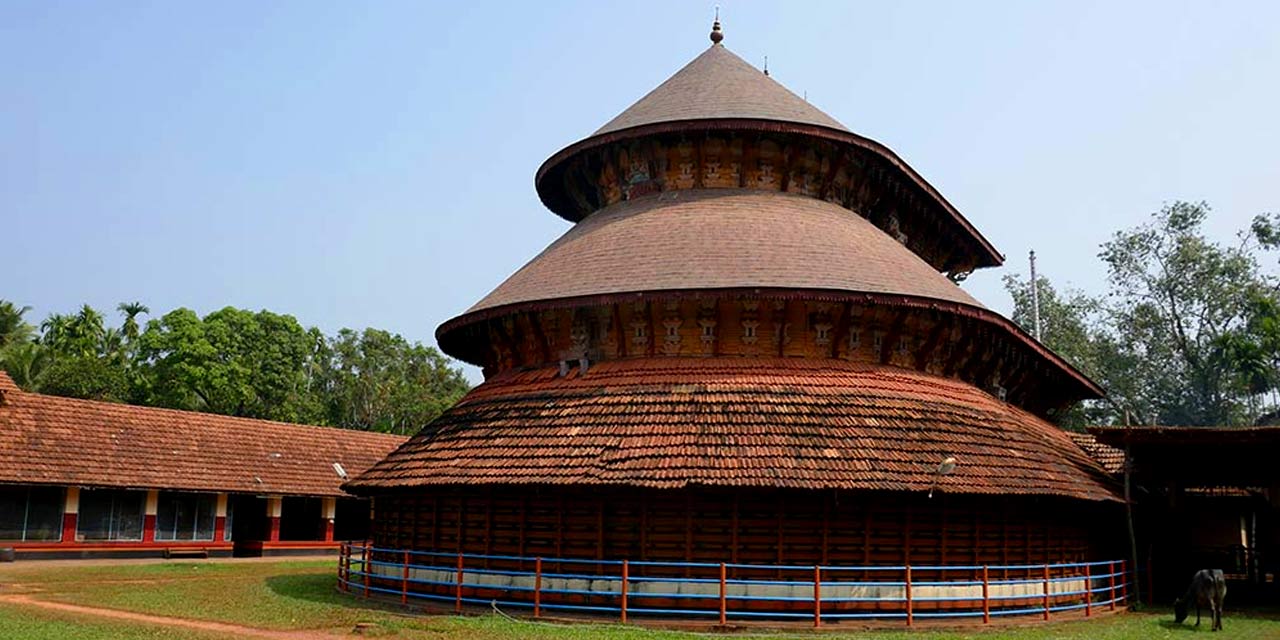
Blessed with a prominent place on the Western Ghats, Kasaragod is not just a spot for hill stations but also home to beaches such as the Kasaragod Beach which houses the Nellikkunnu LightHouse. Hiking enthusiasts can gear up for a trek to the peak of Ranipuram which is more than a kilometre in altitude. The Kottancheri Hills are also recommended for their peaceful surroundings and the bordering lakes.
One of the oldest mosques in the country is in Kasaragod. Malik Dinar Mosque was instituted by Malik Deenar who was a Persian scholar on a tour of the Indian Subcontinent with the goal of spreading the influence of Islam in this part of the world. In these premises, one can see both the old and the new mosques, apart from a cemetery, an orphanage and a madrassa (Islamic school). The Theruvath Mosque is another spot for those who wish to observe Islamic architecture in this part of Kerala.
A beautiful lake temple which must not escape your itinerary is the Ananthapadmanabhaswamy Temple, also known as Anantha Lake Temple. This Hindu shrine holds the distinction of being the only lake temple in the entire state. According to ancient mythology, the Hindu deity Vishnu settled down in this location. The story of Vishnu is depicted as wood carvings on the ceiling of the main shrine.
Another Hindu temple with a distinct architecture is the Madhur Sree Madanantheshwara-Siddhivinayaka Temple, dedicated to the idols of Shiva and Ganesha. The temple is in a village setting, on the banks of the Mogral River. In fact, one of its streams, Madhuvahini, flows right alongside the temple premise.
21. Kumbalangi
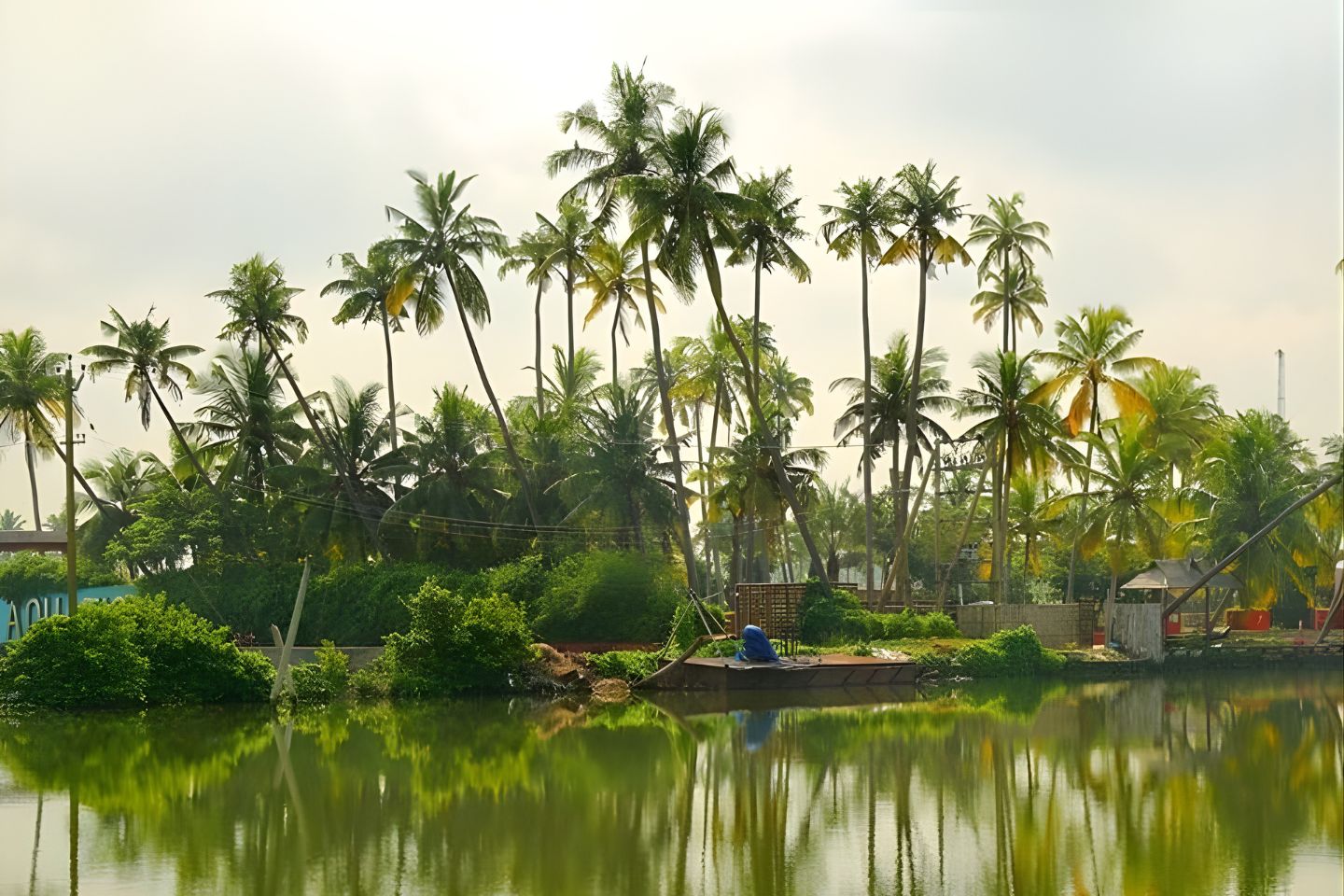
This sleepy village in the Ernakulam district is a preferred rural tourism destination in Kerala due to its bucolic village life, mangroves and the fishing community. The fishermen of Kumbalangi are so friendly, they will also show you how to go about fishing with the attractive Chinese fishing nets.
You can even enjoy a nice meal of fresh seafood at one of the homely eateries along the coast. There are only a handful of sightseeing spots but you can still head to St. Peter’s Church to admire its interiors and whitewashed exterior. If you fancy a water tour of the area, hop onto a boat at Kallencherry where these rides begin.
22. Kottayam
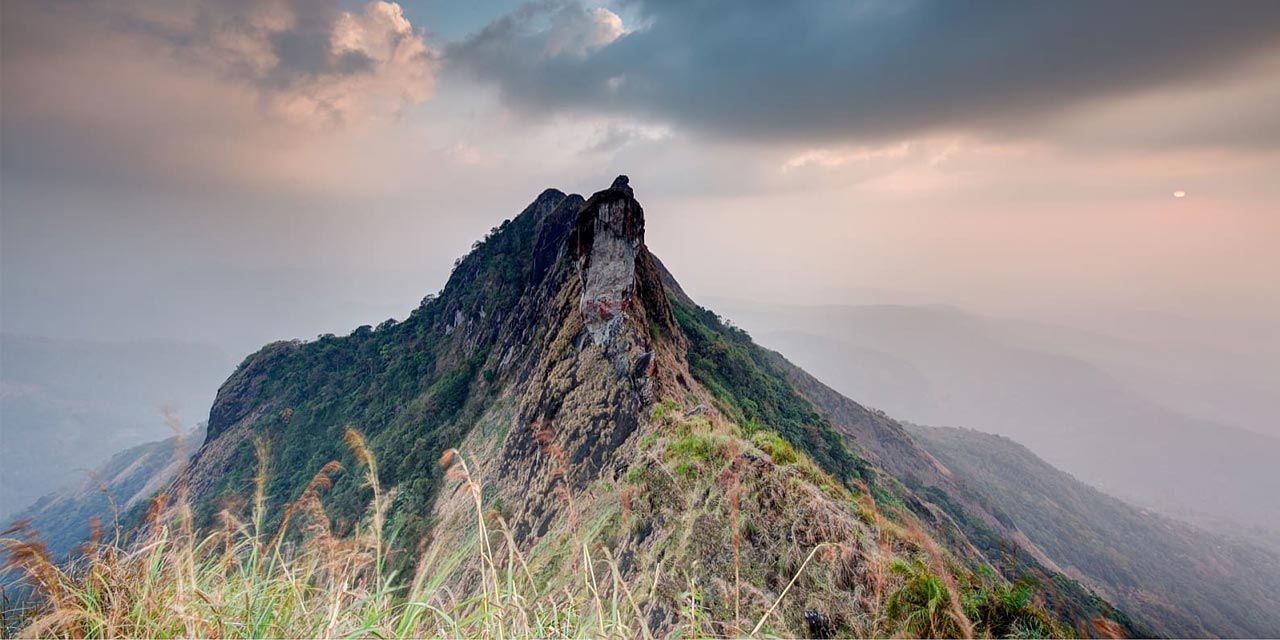
Nestled on the river basin of the Meenachil River, the city of Kottayam is only three metres above the sea level. The meaning of this name in Malayalam is ‘inside the fort’ as derived from the words ‘kotta’ (for fort) and ‘akam’ (for inside). Kottayam offers travellers an insight into traditional Kerala architecture, especially in its temples, churches and mosques. There are also a few parks and art galleries to hold one’s interest.
Ettumanoor Mahadevar Temple (the Shiva temple where the writer Vyasa and the Pandavas from the fictitious epic of Mahabharata are said to have worshipped), Thirunakkara Mahadeva Temple, Panachikkadu Temple (the Saraswati temple which is also called the Dakshana Mookambika Temple), Kumaranalloor Karthyayani Devi Temple (where a litre of coconut oil is considered as the main offering to the female deity), Thaliyil Mahadeva Temple (home to ancient paintings and murals), Pallipurathukavu Devi Temple, Neelamperoor Palli Bhagavathi Temple (a Buddhist temple with Vanadurga as the central deity), Vennimala Sri Rama Lakshmana Swamy Temple, Thiruvarppu Sree Krishna Temple (Krishna being the principal deity) and Shree Dharma Sastha Temple are some of the ornate temples with archetypical styles which can be explored.
Thazhathangady Juma Masjid, which is also called the ‘Taj Juma Masjid’, is over a thousand years old, making it one of the oldest mosques not only in Kerala but also in the country. The mosque boasts of intricate wood carvings. However, its beauty cannot be admired from inside by all. Entry is only for Muslims.
For a taste of the Christian religion, walk through some of Kottayam’s church buildings. St. Mary’s Orthodox Syrian Church (a 440 year old church dedicated to Mary worship, colloquially known as Kottayam Cheriapally), Immaculate Heart of Mary Cathedral (also called Angathattu Palli or Vimalagiri Cathedral), Good Shepherd Church, St. George Orthodox syrian Church (having walls painted with vegetable dyes), Holy Trinity CSI Cathedral and St. Mary's Forane Church are some viable options for church hopping.
Kottayam’s public parks are worth a stroll. Make time for Neendoor Park, Malarikkal Sunset View Point (especially for its lotus blooms and paddy fields), Municipal Jubilee Park and Kodimatha Water Park. Art lovers can drop by the quaint Mozart Art Gallery.
23. Willingdon Island
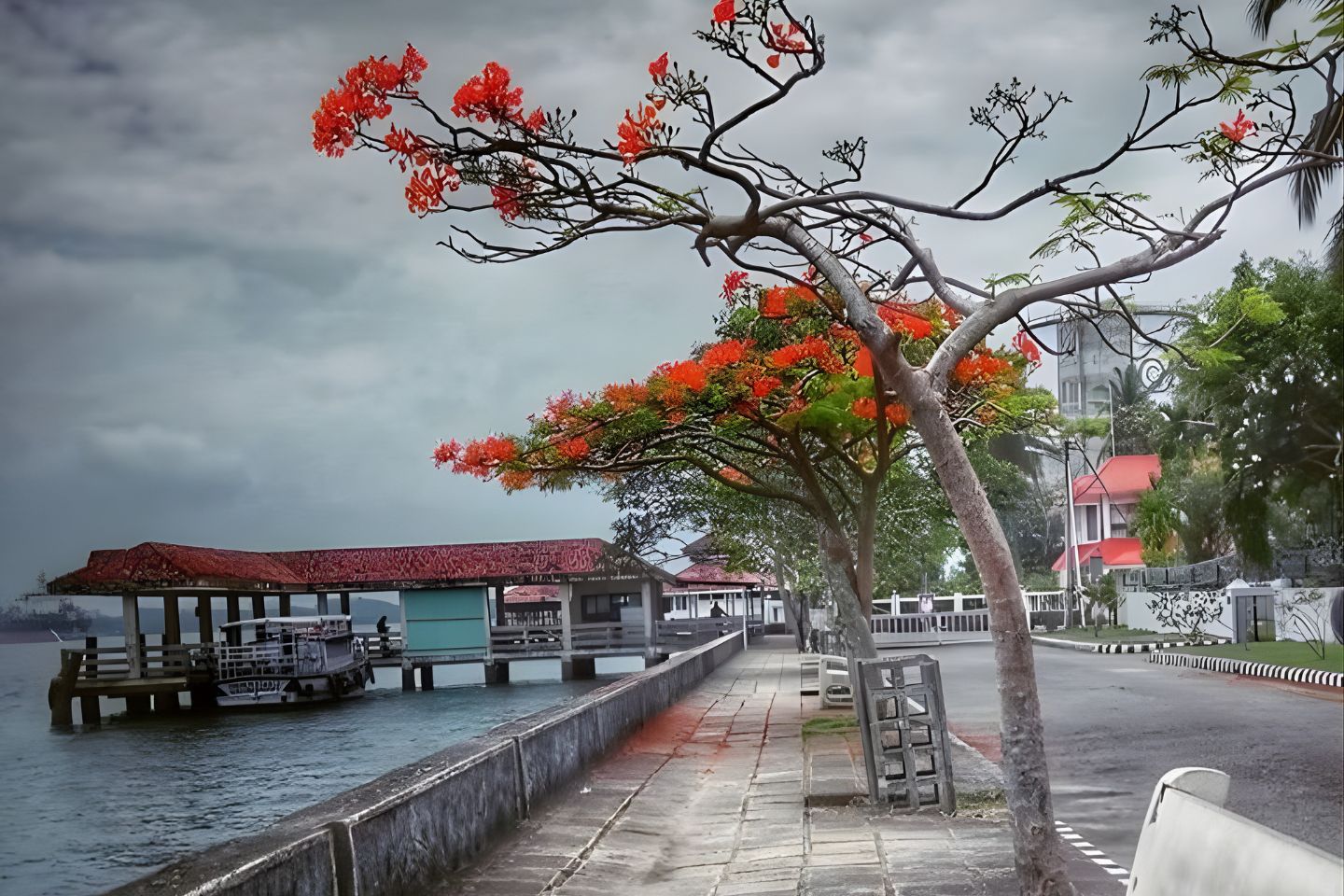
Willingdon Island holds the rare honour of being the largest artificial island in all of India. Reclaimed from the Lake of Kochi, Willingdon Island lets you catch a ferry to most of the other big islands in Kerala, such as Fort Kochi and some parts of Ernakulam. The public ferries cost pleasantly only INR 5 per person. These large ferries can carry entire buses and cars inside, letting the drivers resume their journey once they reach the destination island. It is also possible to sign up for boat tours on the backwaters of Kerala from this island.
A long green patch along the coastline of Willingdon Island is where most of the premium tourist hotels are located. Within the island, there is a popular museum which you can spare an hour to – Cochin Port Maritime Heritage Museum. One can learn about the building of Willingdon Island and observe several pictures of maritime equipment. There is also a souvenir shop to take back some memorabilia for your loved ones. The museum is open on all days of the week except Wednesdays. On weekdays, the timings are 11 AM to 6 PM, whereas it is 2 PM to 7 PM on Saturdays and 4 PM to 7 PM on Sundays and other public holidays.
24. Kannur

Nicknamed as the land of looms and lores, Kannur was once known by its English name Cannanore and Portuguese name Cananor. This coastal city provides a glimpse into the European past and Muslim royal history alongside balmy palm-lined beaches.
No visit to Kannur is complete without a tour of St. Angelo Fort. Also known as Fortaleza de Santo ngelo de Cananor, this historical gem is under the ASI (Archaeological Survey of India). The laterite brick fort, most of which is moss layered now, has a gate and a couple of entrances, the old one being a tunnel. Once can spot old banyan trees while walking inside.
As the Arabian Sea splashes on the rocks that surround St. Angelo Fort, the sounds can be clearly heard since there is no source of noise pollution here. One can explore the army barracks, the cannons stationed at the main entrance and at the top of the fort, the lighthouse powered by an oil lamp, the chapel, the moat, the watchtower and gravestones of the Dutch officials’ family who were buried there.
Kannur’s Payyambalam Beach provides a great avenue for surfing, picnicking and even swimming in the shallow parts of the sea waters. Do visit the Kannur Lighthouse nearby which has a spiral stairway to the top. The lighthouse, also known as Cannanore Lighthouse, is still active and one can often enjoy light and sound shows in the evening.
For a look inside Kannur’s Islamic past, head to the Arakkal Museum which is a part of the larger Arakkal Royal Palace, also known as Arakkalkettu. Formerly belonging to the Arakkal family of the Malabar Coast, the palace and museum has the royal coat of arms, photo galleries, ancient furniture, incense stick holders, archaic telephones, telescopes and notebooks.
Spend your leisure time at the Mappila Bay and try your hand at boating or relax on Baby Beach or Adikadalayi Beach. Thottada Beach is another tempting option, with its rocky surroundings and smooth sands, especially if you wish to go swimming.
25. Vizhinjam
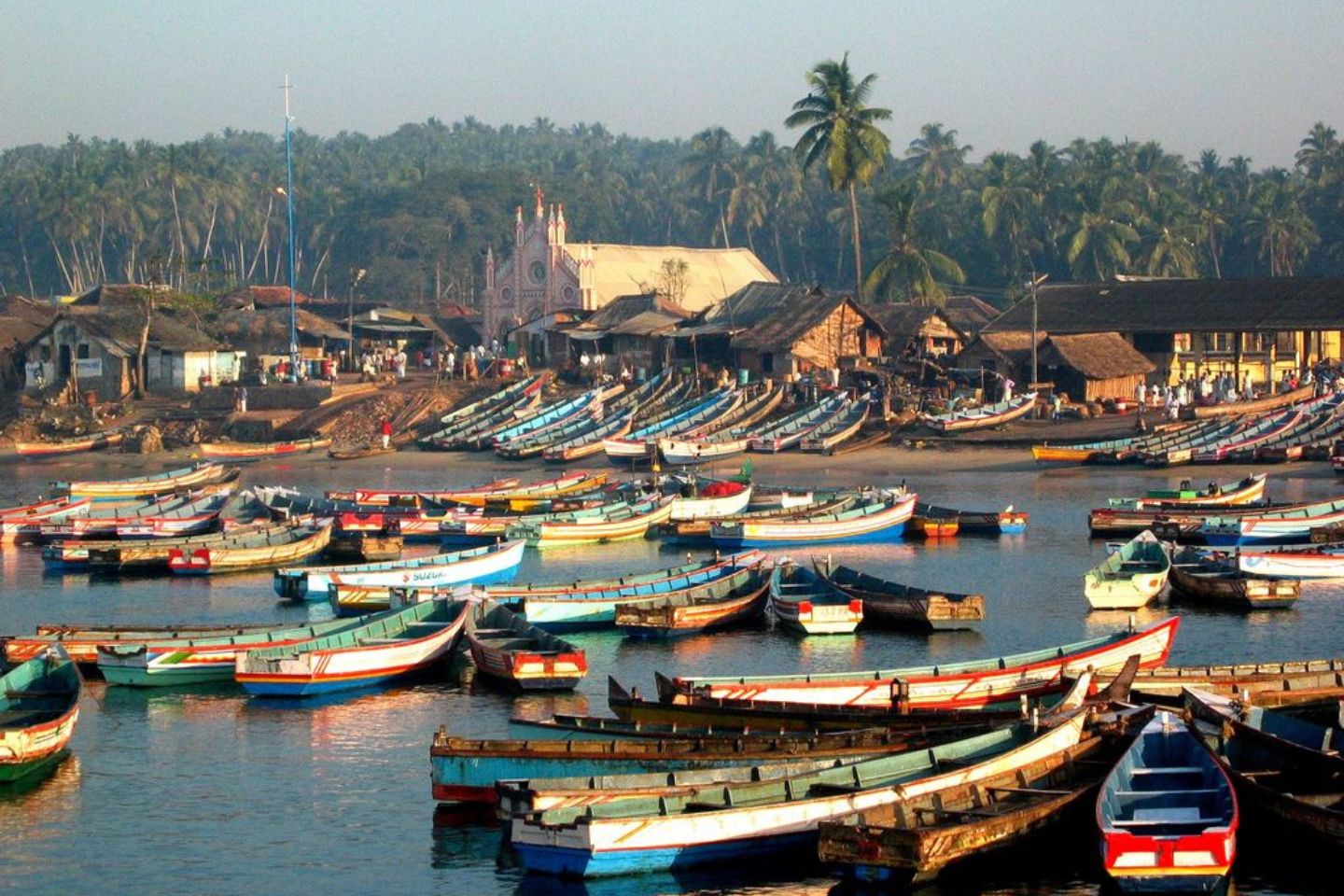
The small village of Vizhinjam may not find a place on most tourist maps, but this is what makes it so appealing. The fact that it is relatively unknown is a big reason to enjoy this locale without the huge crowds. With a beach, a lighthouse and a cave, there are a few things to keep one interesting in this tiny but significant hamlet.
Begin your tour at the Vizhinjam Cave Temple which goes all the way back to the 8th century. This granite cave is actually a Hindu temple which has a sculpture of the idol Vinadhara Dakshinamurti. This peculiar statue depicts the mythological deity of Shiva but with four hands. Even though the cave is quite small and only consisting of a single cell, it is important due to its age.
The outer wall of the Vizhinjam Cave Temple has a carving of Shiva as Tripurantakara, with a caricature of Apasmara being squashed under his left foot. One another side of this outer wall, Shiva is seen in his dancing pose as Nataraja, with his paramour Parvati beside him. One can also make out the unfinished forms of a couple of gatekeepers or dvarapalakas. The temple is thought to have been built during the reign of the Ay Dynasty which came before the famous Pallava Dynasty.
The Vizhinjam Lighthouse is a beautiful red and white striped lighthouse on the eponymous beach. Located on the edge of a small cliff, the lighthouse is fitted with a day mark beacon. The beach itself is a lovely place to hang out, with a clean stretch of sand and sea, a children’s park, eateries and even an aquarium.
26. Vypin Island
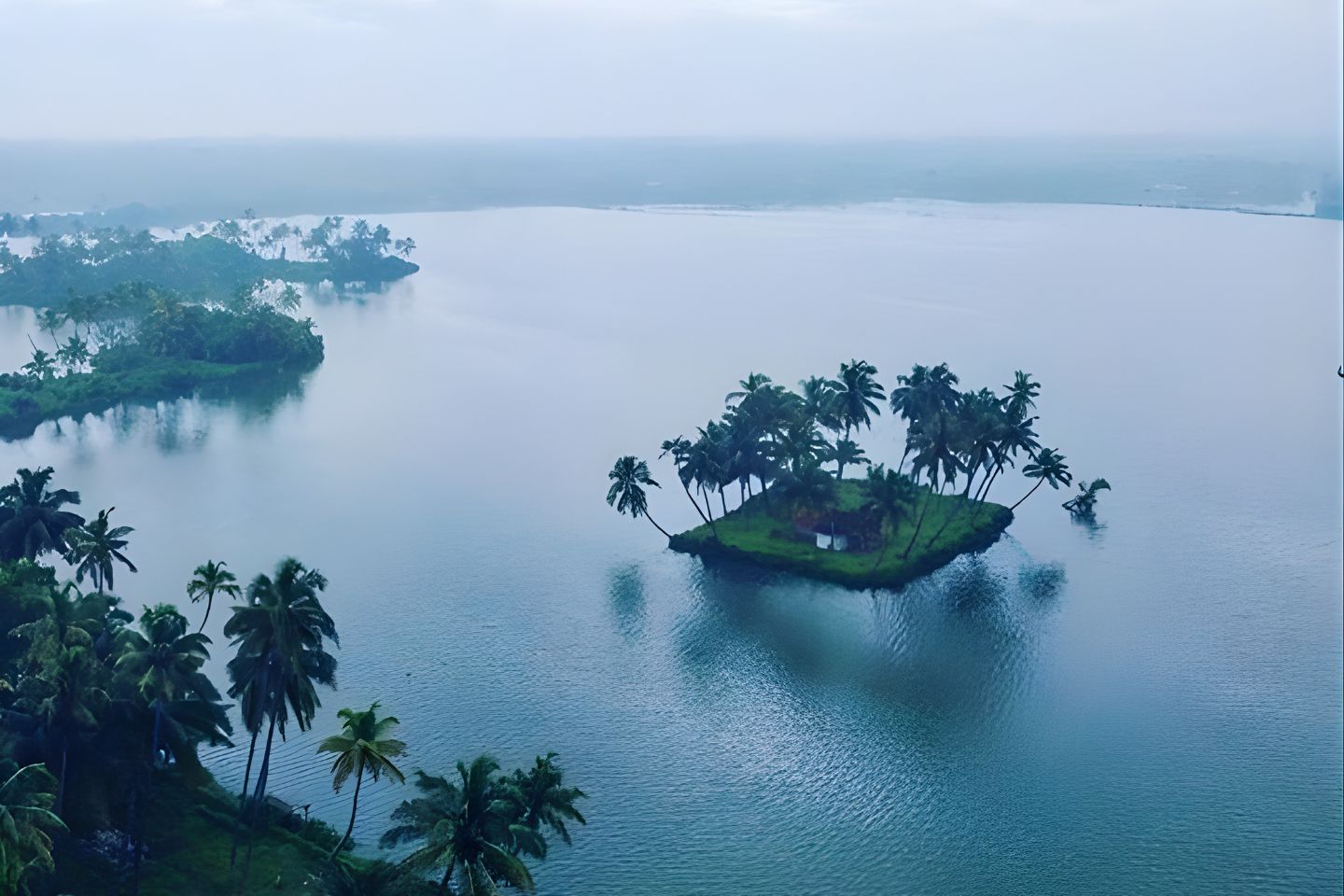
Vypin Island is actually one of the clusters of islands which belong to Kochi. Also known as Vypeen, the island is 12 miles in length and joined to the mainland through the Goshree series of bridges. Home to some of the longest stretches of beaches in Kerala, Vypin offers visitors Cherai Beach to the North, Kuzhuppilly Beach and Puthuvype Beach which also has a lighthouse to call its own. Entry to this lighthouse is only in the evening between 3 PM and 5 PM.
At certain parts of Vypin, especially at Manjanakad, one can see the rare sight of sea water meeting fresh water from the Vembanad Lake. A part of this lake is also called Veeranpuzha and one can easily spot the Chinese Fishing Nets which are widely used in this part of the country.
A historical site which should not be missed on Vypin Island is the Pallippuram Fort which was built in 1503 by the Portuguese. It has the honour of being the oldest fort built by the Europeans in all of India! The fort saw the Dutch capture it in 1661 and later being sold to the King of Travancore in 1789. Pallippuram Fort flaunts the ayikkotta or alikotta style of architecture which lends it the iconic hexagonal shape. The materials used in its construction are mainly lime plaster, laterite and wood.
27. Muzhappilangad
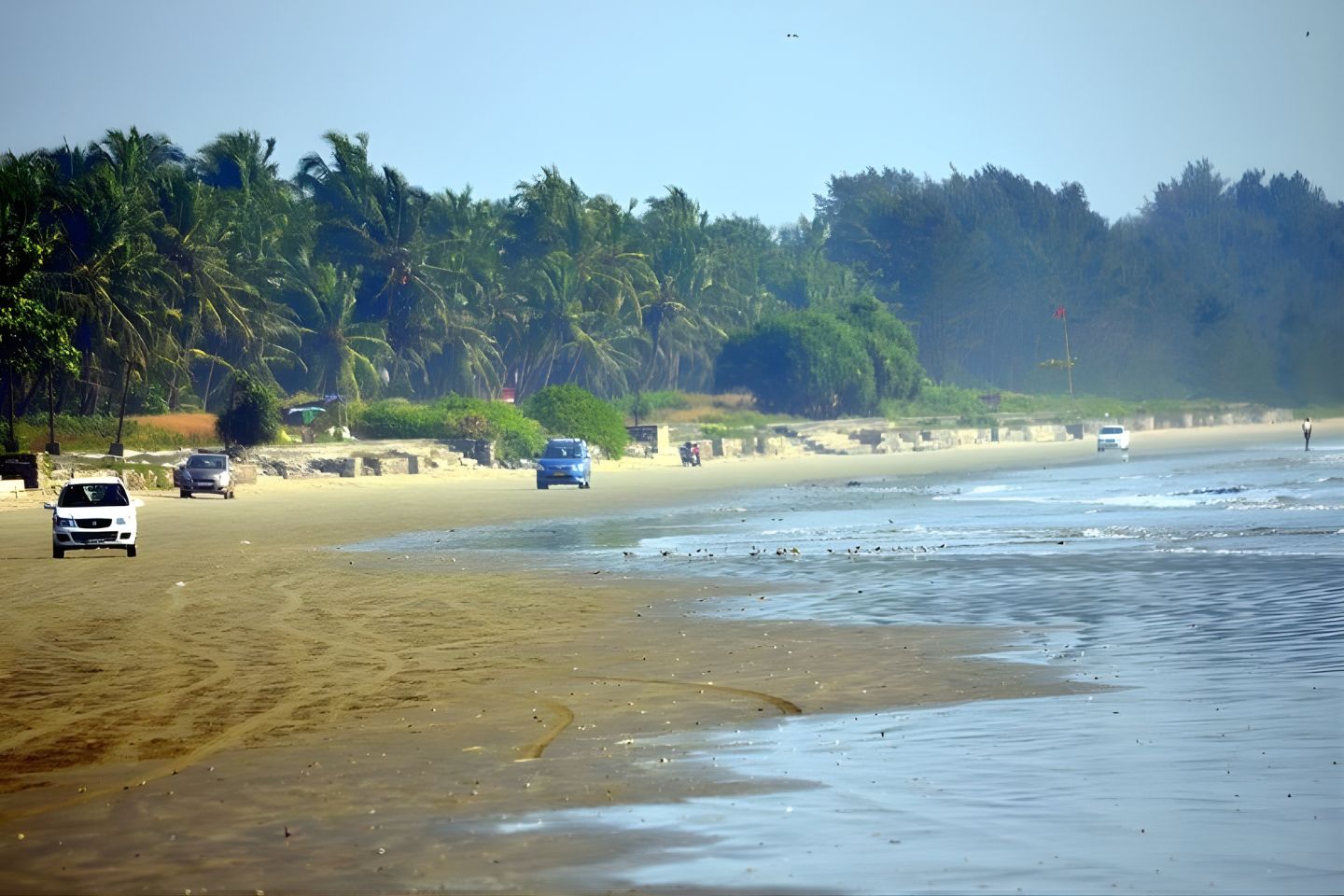
Muzhappilangad is a tiny coastal village in Kerala but famous for its longest drive-in beach in all of Asia. Muzhappilangad Drive-in Beach is one of the few beaches in India to allow vehicles on the beach. Birdwatchers can rejoice in winters when migratory birds swamp the area with their presence. You will have a chance to spot more than 30 species of birds, some of which are terns, sea gulls and sandpipers. Wait for the beach festivals to liven up your vacation, or just try your hand at paragliding in the sea breeze. One can also see a rock formation at a certain point of the beach.
From Muzhappilangad, you can also watch the Dharmadam Island which used to be a Buddhist area sometime back in history. Also called Dharmapattanam, the island is a private one. However, it is possible to tour this with prior permission. Nearby, Dharmadam Beach is another rejuvenating option, especially if you wish to watch the sunset on a palm-fringed stretch.
28. Malappuram
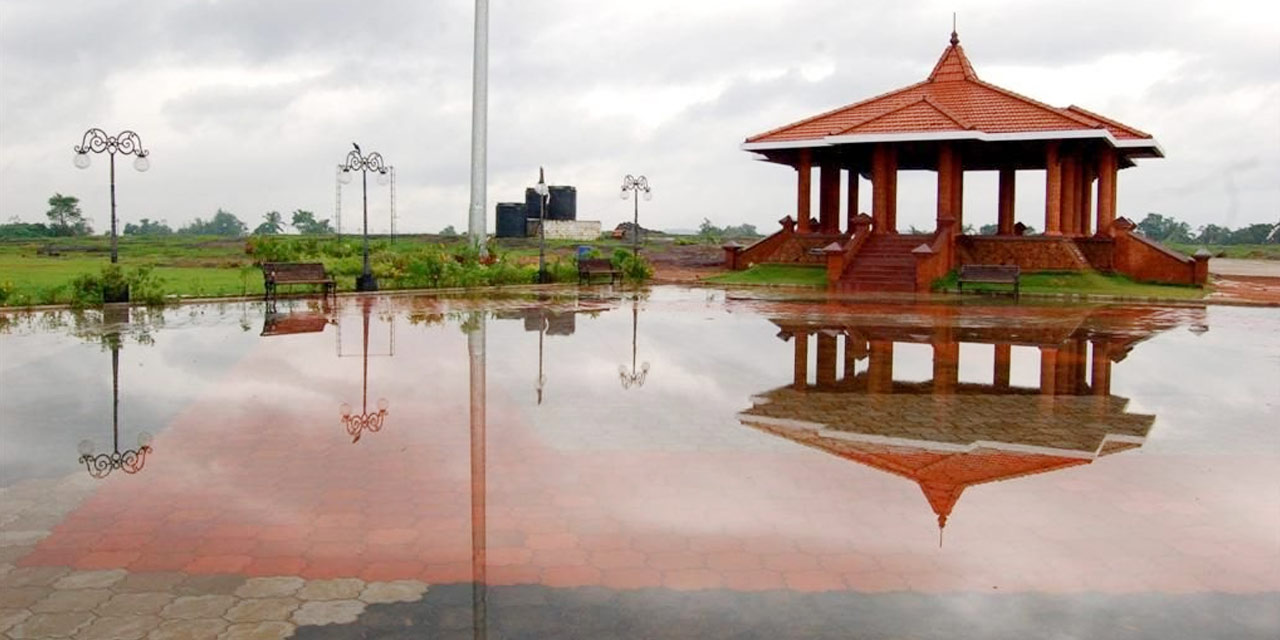
The name of this city literally means hilltop in Malayalam. Malappuram has a Buddhist and Jain past, which is reflected in the archaeological remains of its rock-cut caves, concentrated mostly in the neighbourhoods of Ponmala, Melmuri and Oorakam. In fact, on the Oorakam Hill, at an altitude of 2000 feet, there is a 1500 year old Jain temple.
Have your fill of nature in Malappuram at Chamakkayam Riverside Park which has lakes and hanging bridges. The sprawling Kottakunnu park, road and step way also make for an enchanting walk.
29. Idukki
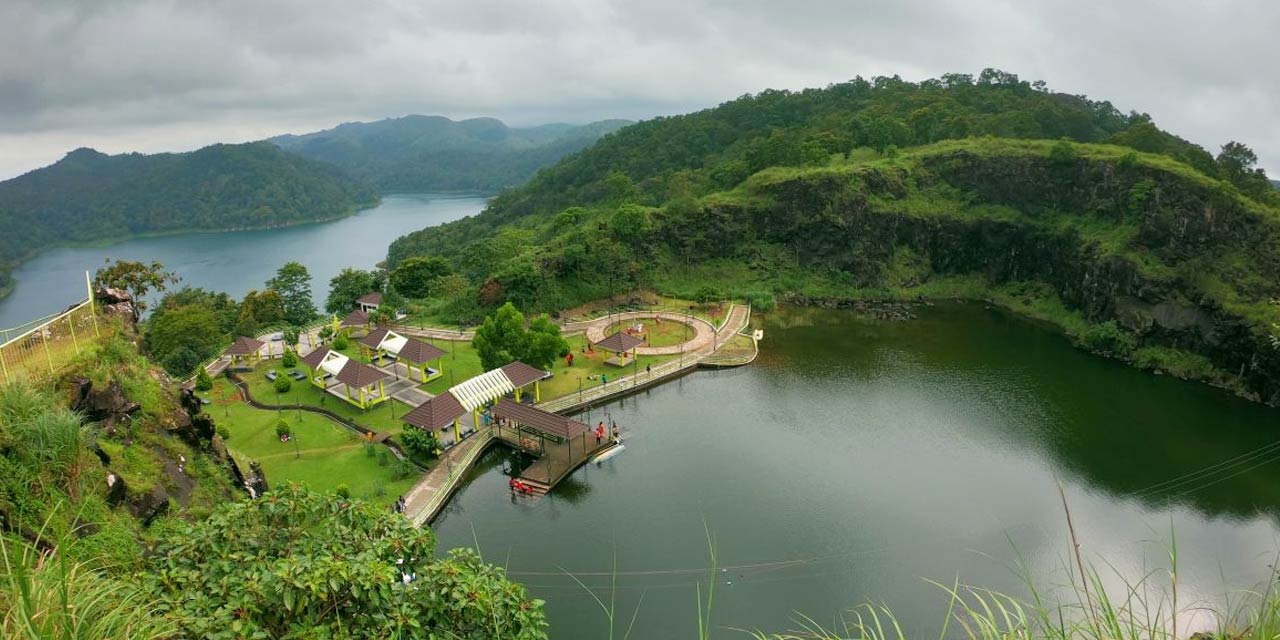
Home to the highest mountain peak in all of southern India, Idukki takes pride in Anamudi on the Western Ghats. The forest cover of Idukki has also earned it the moniker ‘Spice Garden of Kerala’. The meaning of Idukki is ‘a narrow gorge’.
Do not miss a trip to the Idukki Wildlife Sanctuary which is spread over a hundred square kilometres. The varying altitude ranges from 450 metres to 1272 metres, Vanjur Medu being the highest peak. Through the wildlife sanctuary itself, a couple of famous rivers flow – Periyar and Cheruthoniar, submerging even some trees.
Spot the unique Nilgiri tahr at Eravikulam National Park, most of which is over 5000 feet in altitude. Mostly grasslands, this park lets you sight muntjac, deer, gaur, porcupine, mongoose, and more. Even exotic birds such as the Kerala laughingthrush, white bellied shortwing and Nilgiri pipit can be spotted in these woods.
Idukki becomes quite a favourite in the monsoon since its waterfalls come alive. The Cheeyappara Waterfalls are not only a delight to watch but also fun to trek. Also famous for eco-tourism, the Thommankuthu Waterfalls form a series of 12 falls, spread over 5 kilometres.
30. Charalkunnu
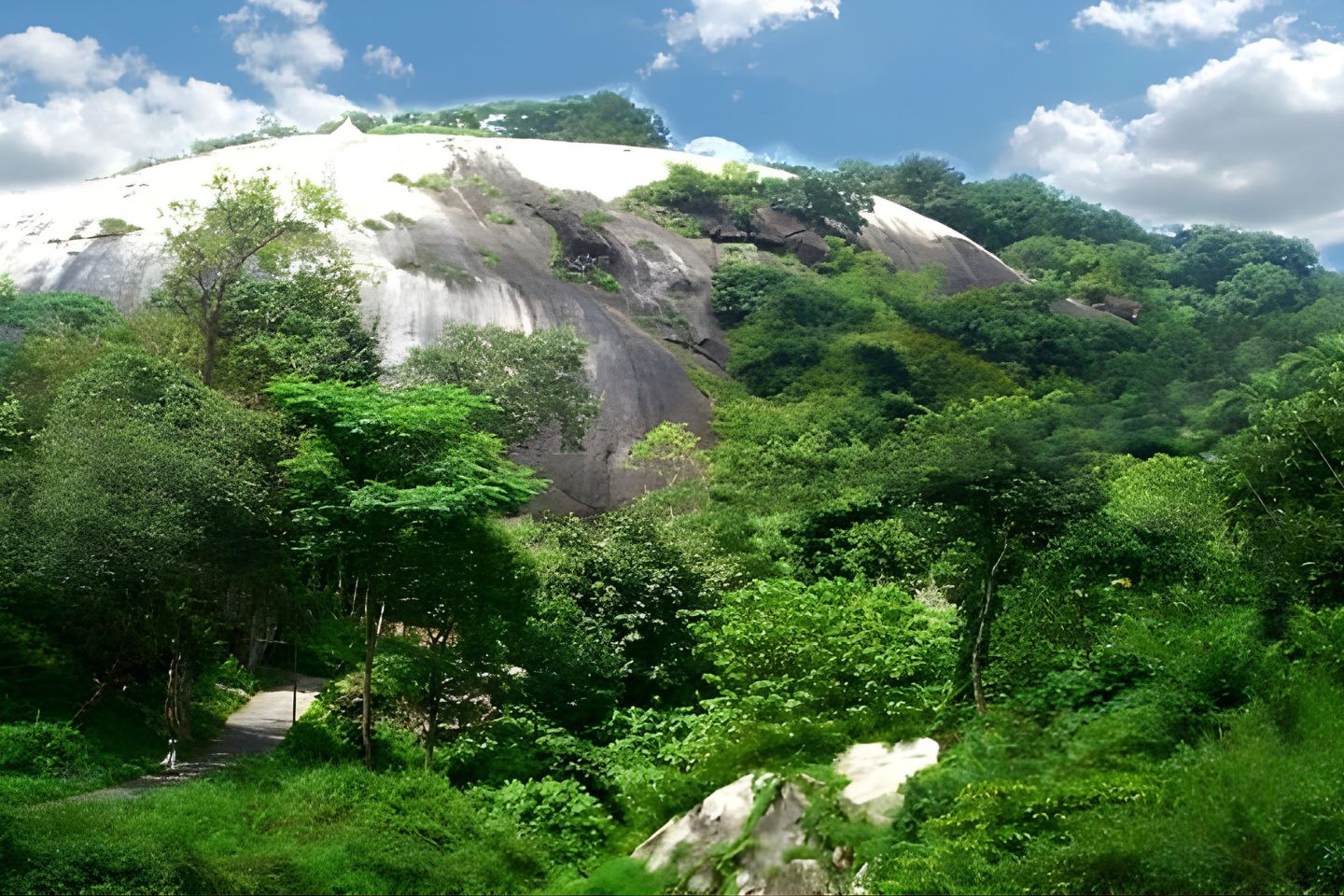
Located in the Pathanamthitta district, Charalkunnu is a lovely hill station with the Pampa River gracing its low-lying areas. There are a few hiking trails that even solo trekkers can take up as a challenge on these hills. For families, there are camp houses (in case you are not too comfortable setting up your own tent) and areas for spreading out your blanket to enjoy a picnic.
31. Gavi
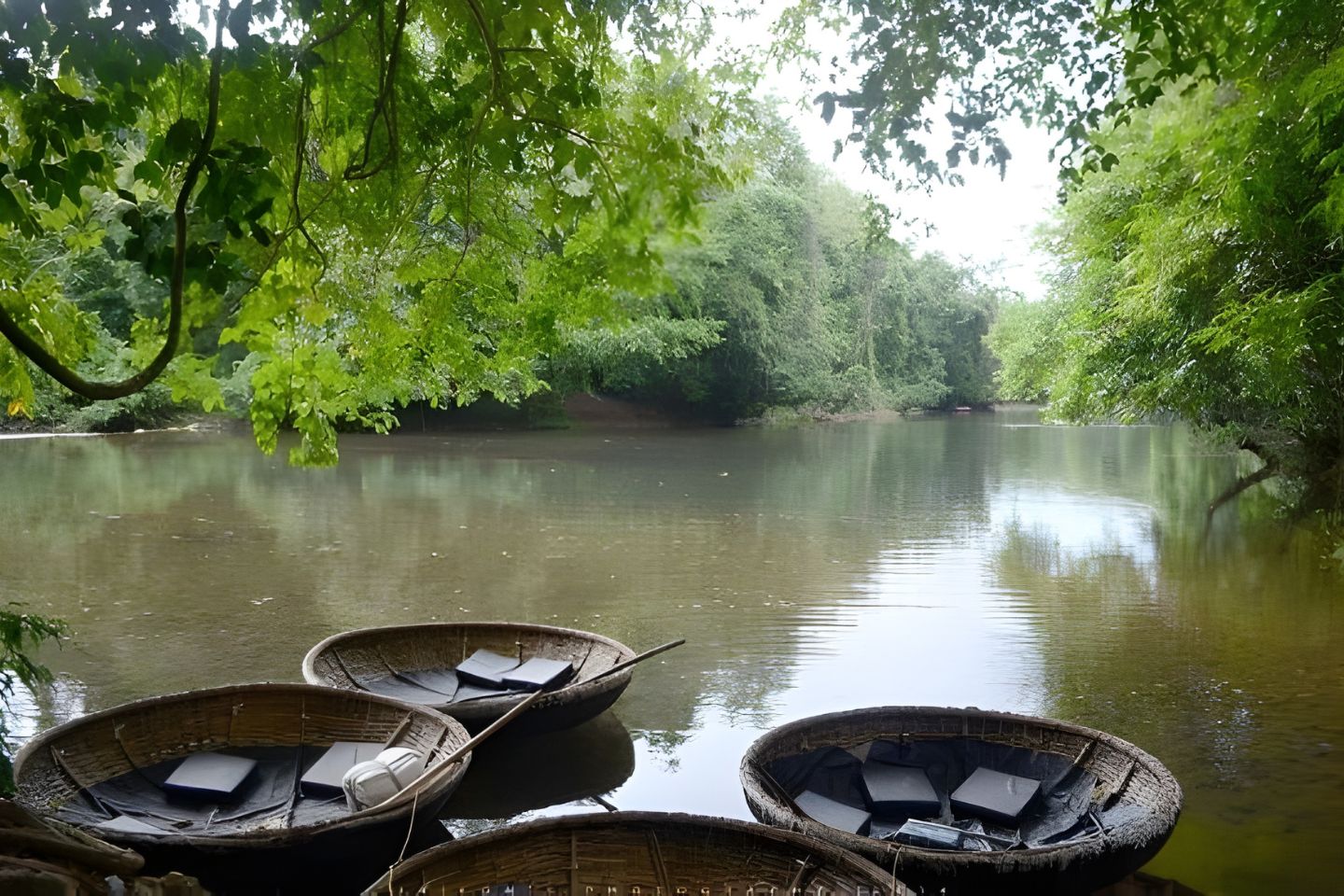
A sleepy village in the Pathanamthitta district, Gavi is a forested land full of wild flowers, mushrooms, more than 250 species of birds and even some wild animals. Nestled amidst tea estates and woods, Gavi also has waterfalls. The Neer Veezhcha WaterFalls can be experienced up close when you take a paddle boat ride through the lake. The chirping birds and flailing leaves add to the thrill of watching the waterfall.
Gavi is Kerala’s eco-tourism hotspot which costs only INR 25 for adult entry. If you take your vehicle along, you pay INR 50. Cameras are charged an extra INR 25. The village also offers lake activities such as canoeing or even camping on the surrounding green plains. At one point you can see the Sabarimala mountaintop too.
32. Anchuthengu
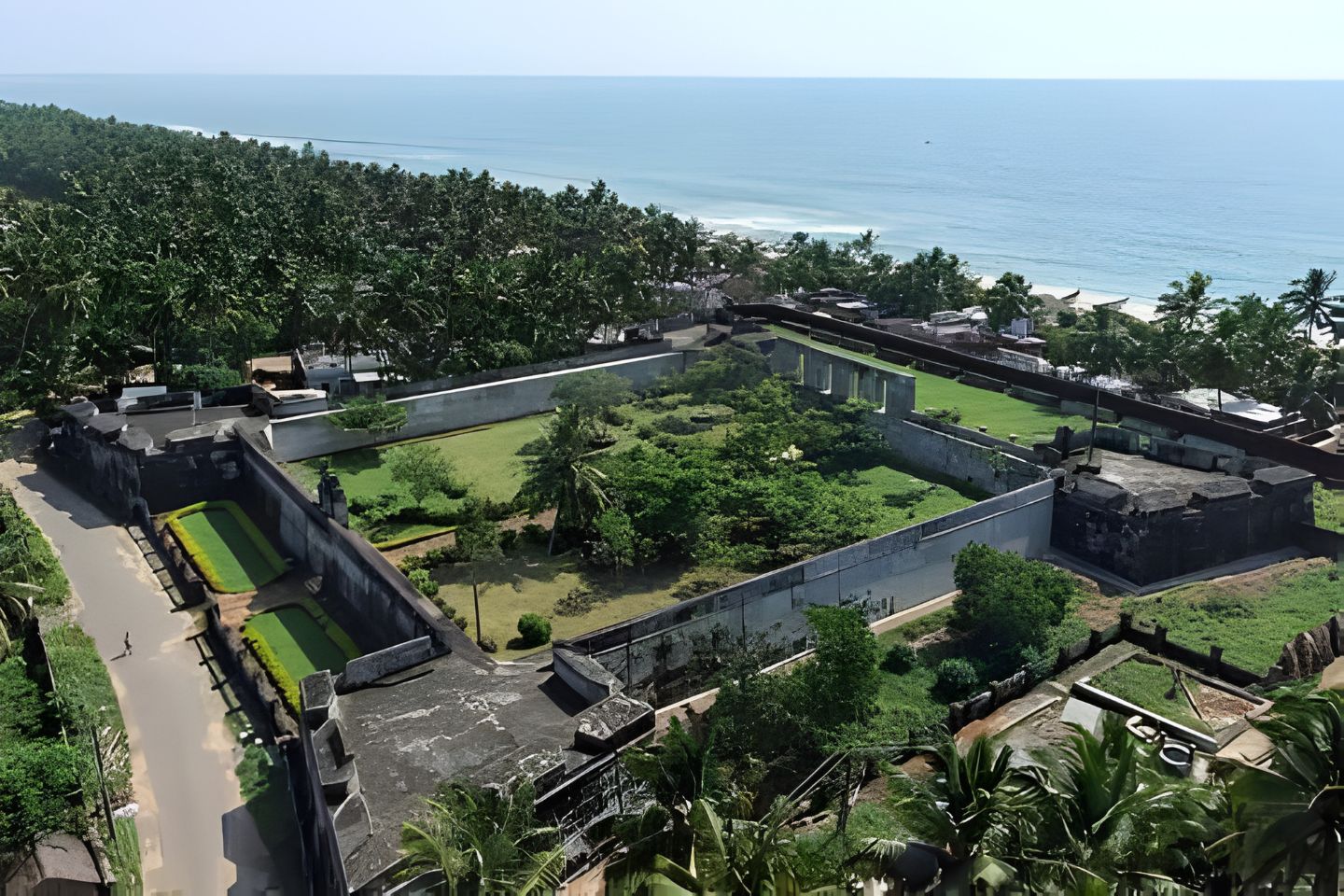
Once known as Anjengo or Anjenga, Anchuthengu is a coastal town whose name means ‘five coconut palms’ in Malayalam. Home to the tombs of the Dutch and the British, this small town also has a lot of Portuguese churches. However, its claim to fame is the 17th century Anchuthengu Fort which is also called Anjengo Fort.
This fort was built in 1699 by the East India Company to work as a signalling station for all of the British ships that came all the way from England. This square fort has four bastions to support the mounting of sixteen guns in total. The garrison could support 400 to 480 Europeans at a time. The Anjengo Lighthouse is nearby, providing a pretty landmark, with its white and black horizontally striped body.
33. Kayamkulam
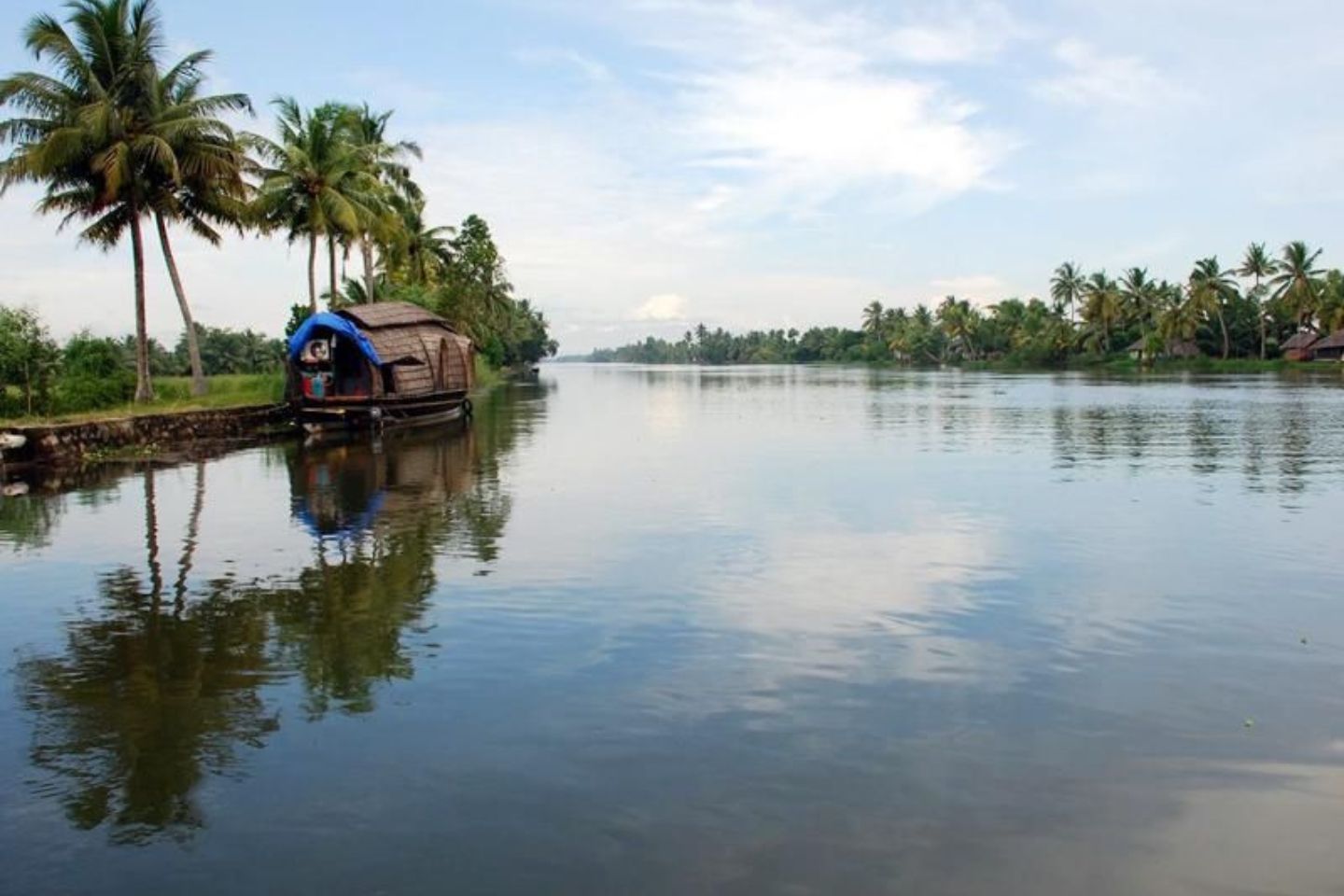
Once known as Odanadu, Kayamkulam used to be a feudal kingdom, a part of Onattukara. This town is notable for its Krishnapuram Palace which used to be the abode of the feudal lords. Built by the King of Travancore, Anizham Thirunal Marthanda Varma, in the 18th century, the palace exhibits the classic Kerala style of architecture.
Nearby, the Krishnaswamy Temple attests to the Hindu affiliation of the kings of that time, and that of most of the people even today. Interestingly, even Buddha statues adorn the courtyard, marking the vast influence of Buddhism in this region. Inside the palace, one can glance through the paintings and murals which beautify its interiors. The palace also has a huge pond in its premise.
Nature lovers can rejoice at the shallow Kayamkulam Lake or Kayamkulam Estuary which is locally known as Kayamkulam Kayal. The water is brackish and the lagoon is also used for the traditional boat race.
34. Bolgatty Island
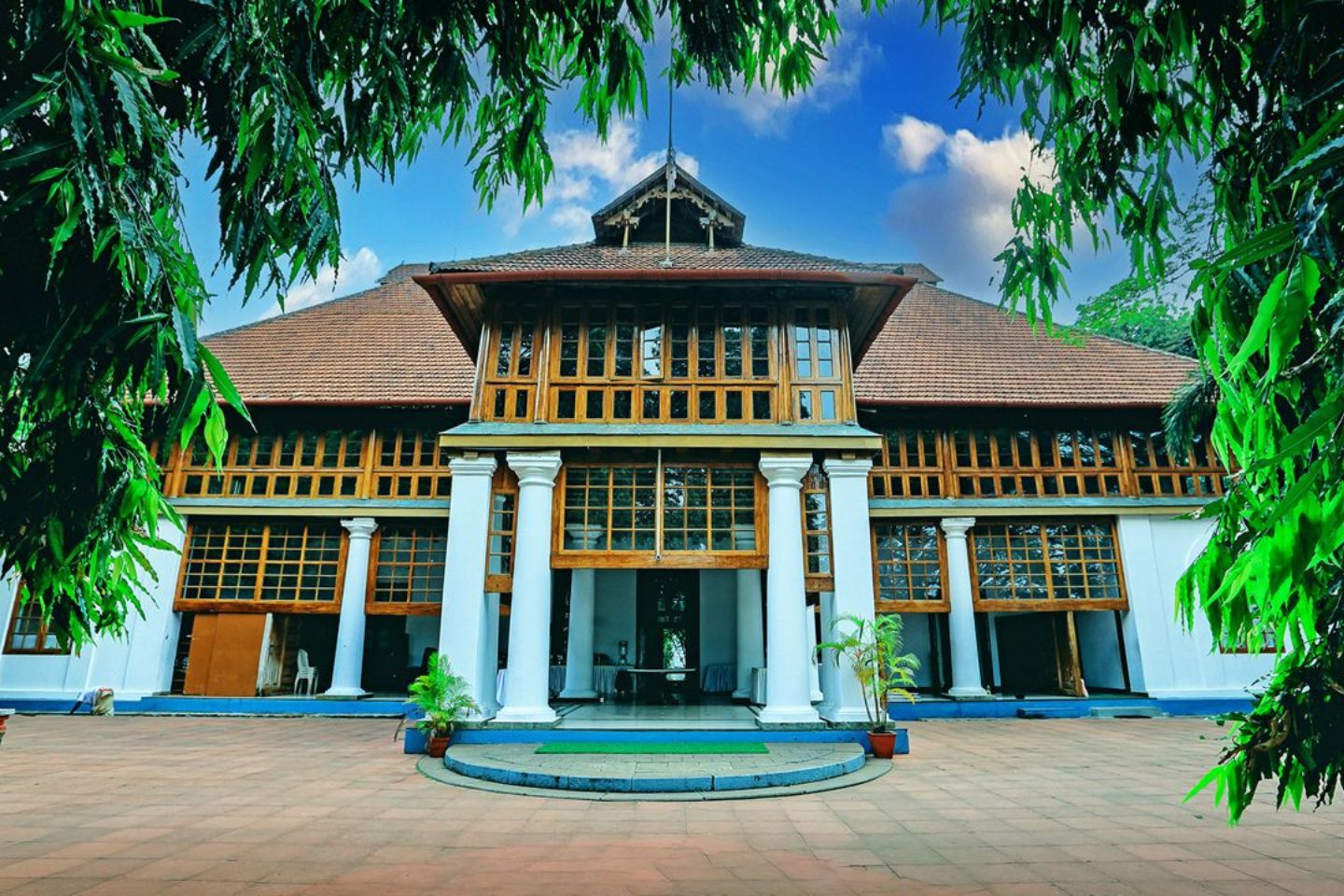
Locally known as Mulavukad, the village of Bolgatty Island is a small isle which forms the larger Ernakulam district. Home to a few beach resorts, the island also has a golf course – the Bolgatty Golf Club. The little island also has a Hindu temple – Mandekkat Bhagavathy Temple, close to the Goshree Bridge which connects to Ernakulam mainland.
St Sebastian's Church is one of only few Catholic churches on Bolgatty Island. The others are Kristhuraja Chapel, Stella Marys Monastry and Our Lady of Mercy Church. One will also find a few Hindu temples and a handful of mosques on the island.
35. Mananthavady
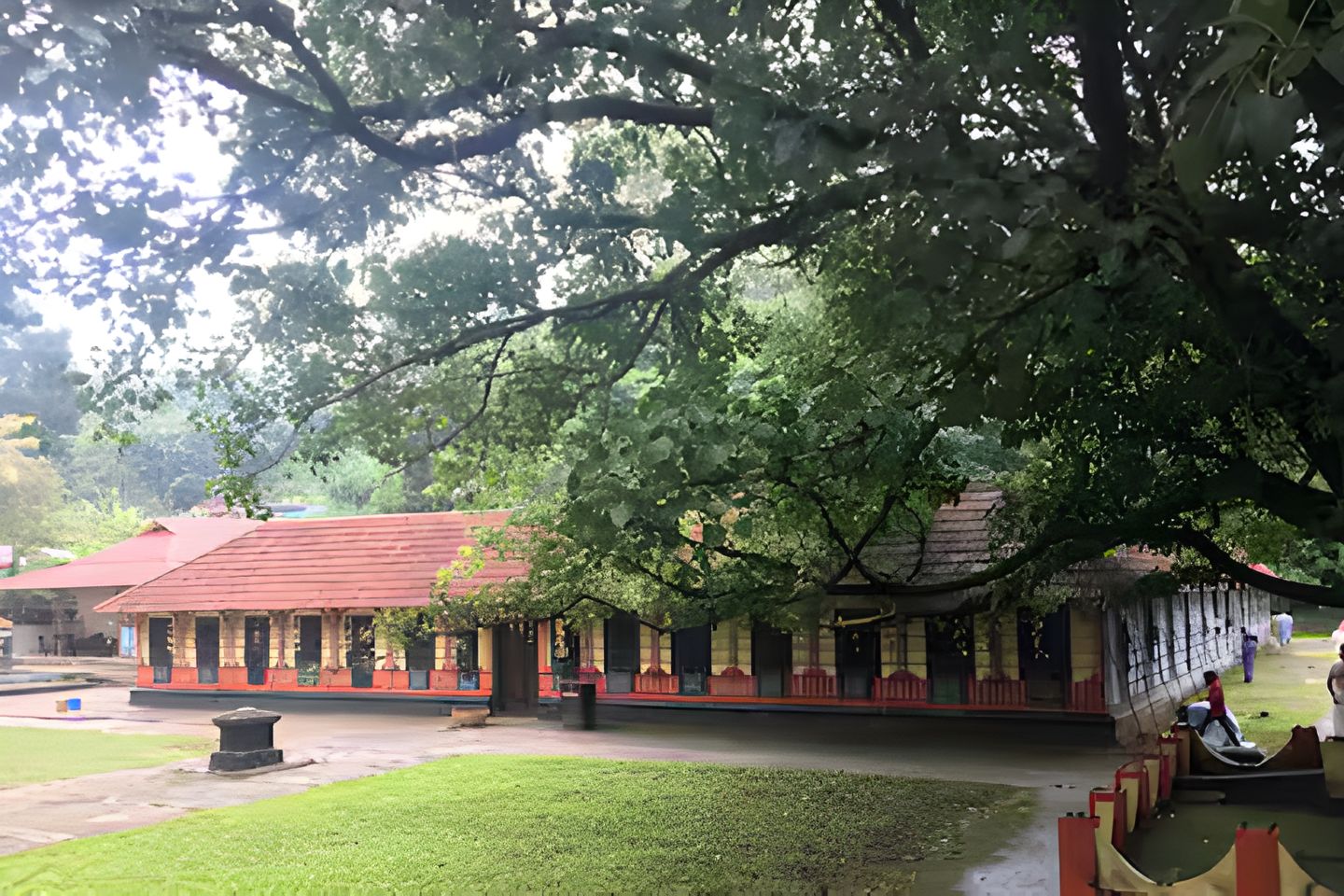
Perfectly placed on the banks of the Mananthavady River, the eponymous municipality houses the Pazhassi Raja Museum. The complex also has the tomb of Pazhassi Raja and well landscaped gardens. The 18th century ruler has been immortalized through the artefacts stored in this museum erected in his honour. Take a look at the collection of weapons, coins and even utensils and cutlery inside the museum.
Some miles away, you can also head into the wilderness and explore the Begur Reserve Forest which is a wildlife sanctuary. The Kabini River flows through this forest, the Mananthavady River being one of its tributaries. Other offbeat destinations around this municipality are the Palchuram Falls and Muneeswaran Kunnu Viewpoint which can easily be hiked and camped upon.
36. Aralam
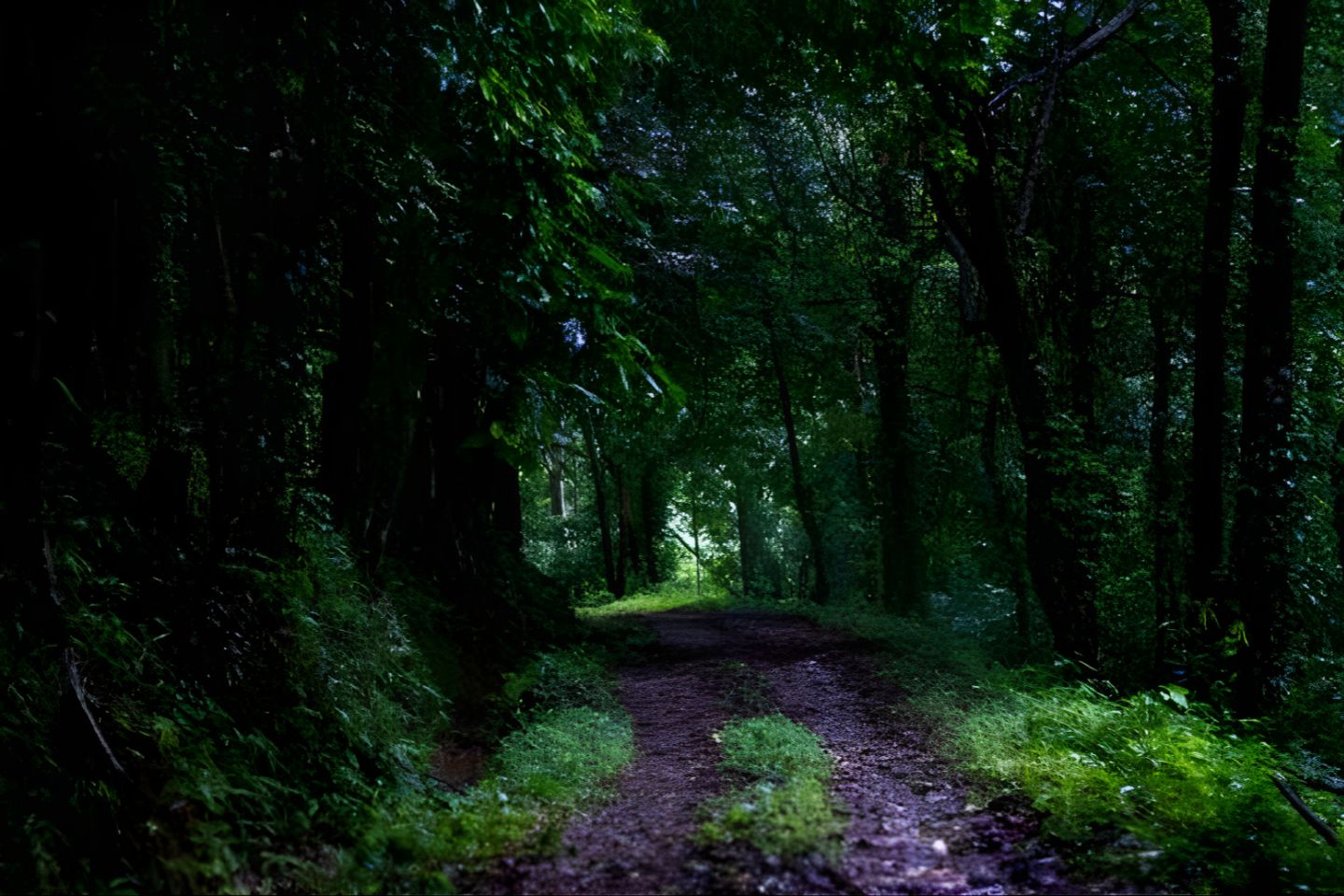
Most notable for the Aralam Wildlife Sanctuary, the village of Aralam mainly sees tourists interested in animals and nature. The wildlife sanctuary is Kerala’s northernmost one, spread over 55 square kilometres. Its location on the Western Ghats also adds to the ambient conditions inside the wooded enclave. Opt for a jeep safari and wait with a bated breath to spot langurs, squirrels, deer and elephants inside.
One can also pursue trekking in Aralam. Ambalappara makes for a 3-day trek and requires you to camp. Ambalappara Lighthouse itself happens to be a camping site. Waterfall fans can do a day trip to Meenmutty and be driven through the forested land.
37. Iritty
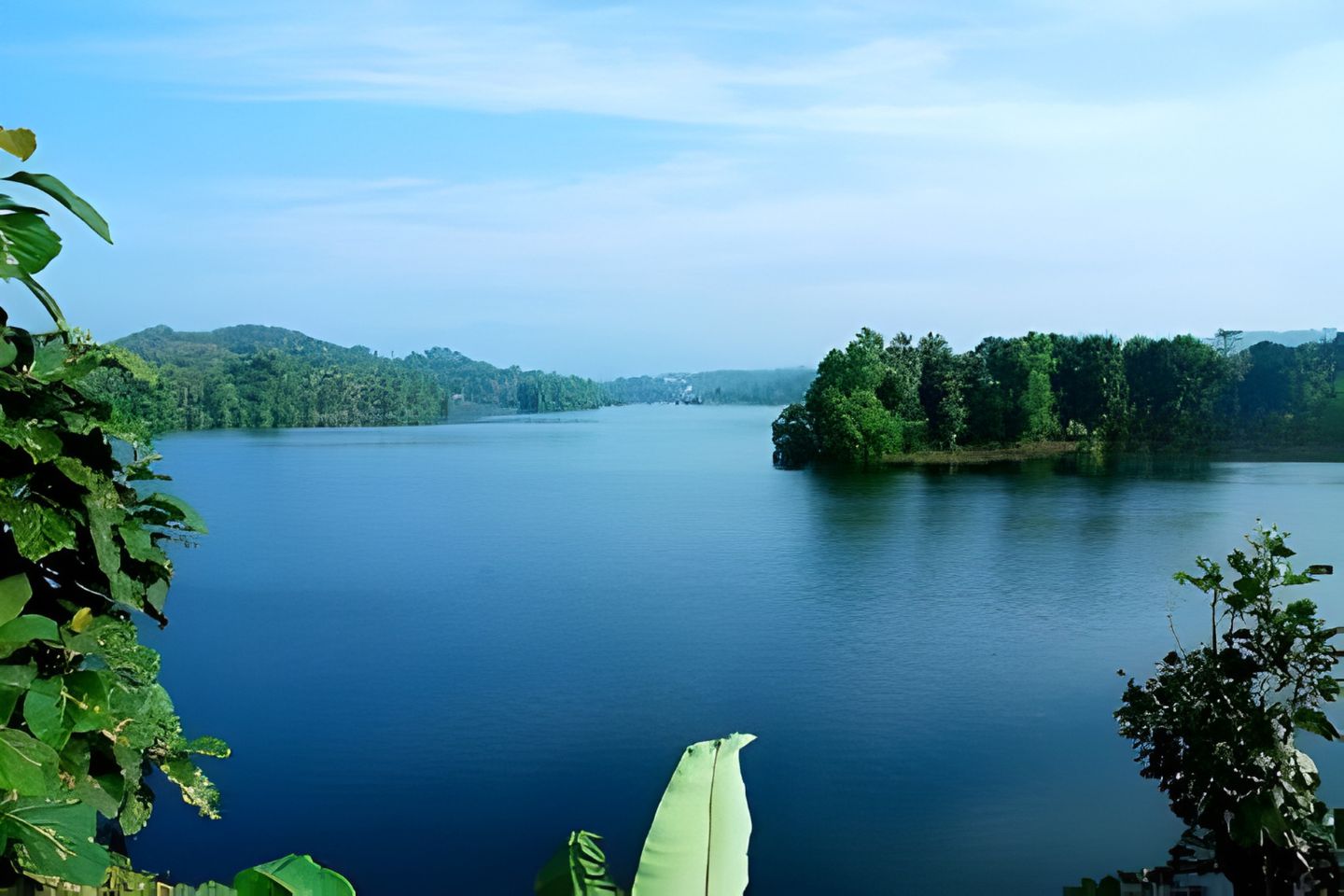
Confusingly known as ‘The Coorg Valley in God's Own Country’, Iritty does have a lot of the characteristics of its Karnataka counterpart. Visit the Pazhassi Dam which is also called Kulur Barrage. It dams the Valapattanam River and the waters are used for irrigation. The popular Mridangasyleshwari Temple is located close to Iritty, surrounded by the lush mountains and dense forests on all sides.
38. Chalakudy
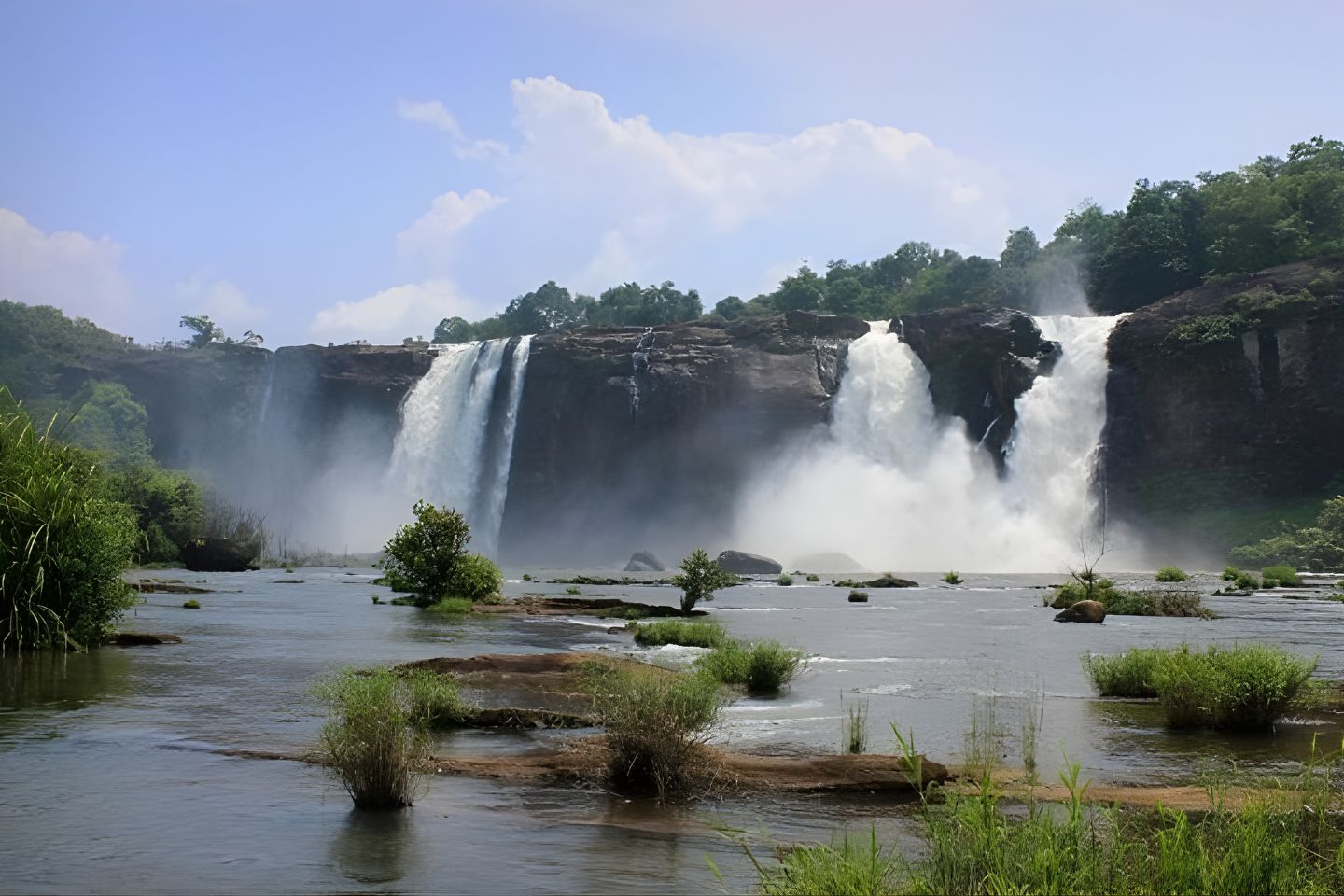
Located by the Chalakudy River, the town of Chalakudy is a pit stop on the way to a couple of rewarding treks in the district of Thrissur. The rare opportunity to trek up a waterfall can be enjoyed on the fringes of the Sholayar range of mountains. Whether it is the Vazhachal Falls which cascade or the Athirappilly Falls, Chalakudy provides the ideal plains for a camping halt. There is a common entry charge for both the waterfalls – INR 20 for four-wheelers and INR 40 per adult.
39. Pathanamthitta

Sitting amidst the tranquil greens, Pathanamthitta is a town surrounded by a lot of Hindu temples. Some of these temples are Mahadeva Temple and Omalloor Chakkulathu Kavu Temple or Sree Rakthakanda Swamy Temple which dates back to the 8th century AD. St. Ignatius Monastery or Manjanikkara Dayara is an elaborate Syrian Orthodox Church in this town. If you would rather skip the religious places, hike up the Chuttippara Hill to get a bird’s eye view of all of Pathanamthitta.
40. Peechi
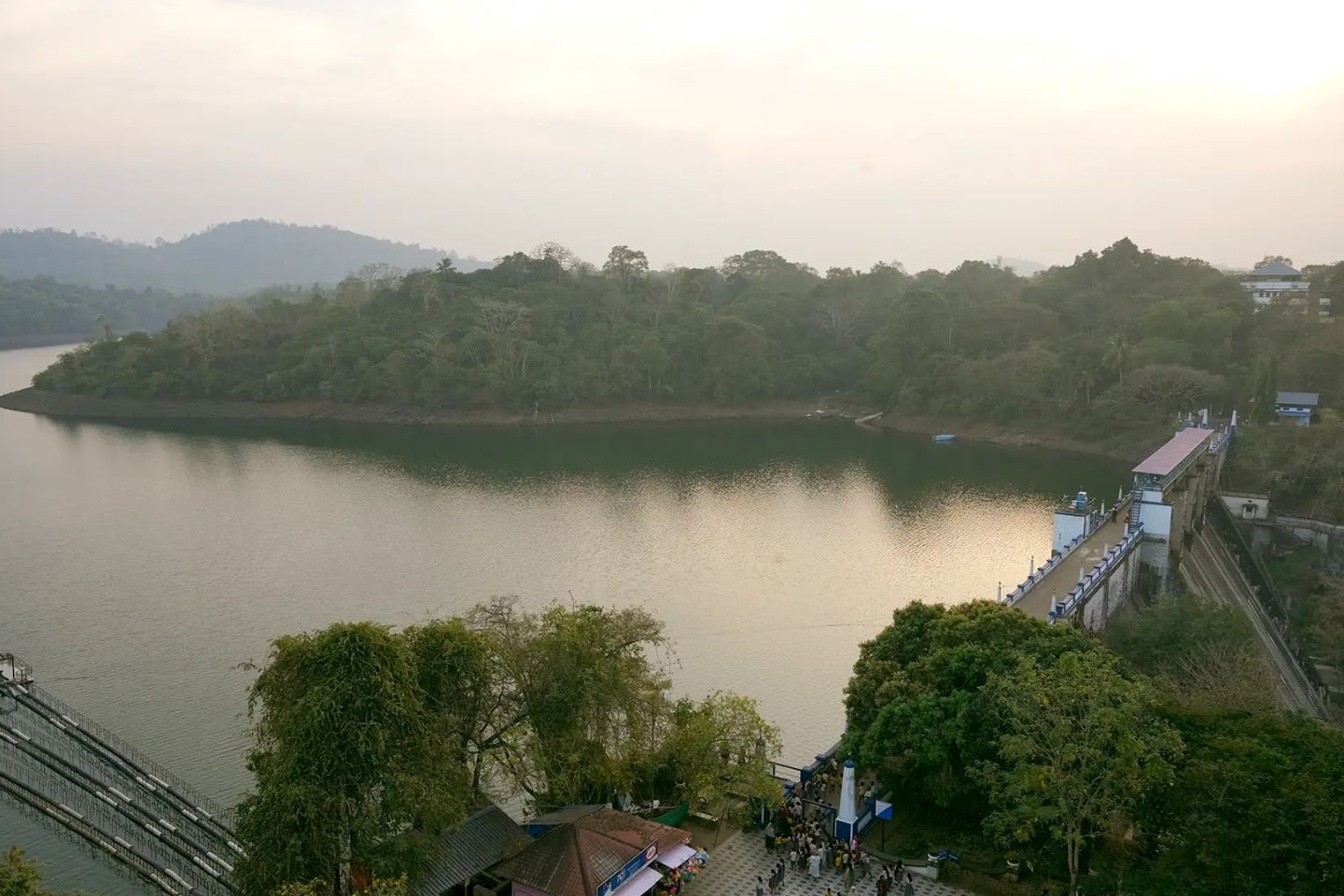
Housing the Peechi-Vazhani Wildlife Sanctuary, the unheard town of Peechi becomes conspicuous for how it gives us a peek into the lives of the indigenous animals. Spread over 125 square kilometres, the wildlife sanctuary is in the catchment portion of the Peechi Dam, with the Vazhani Dam contributing some area. Part of the much larger Palapilli-Nelliampathy forests, the sanctuary is surprisingly a picnic destination too!
Enjoy pleasant activities such as boating and soft hiking here. Go up the Ponmudi Hill at an altitude of 923 metres and bask in the joy of viewing the entire valley from up here. The forest has a treasure trove of medicinal plants, more than 50 varieties of orchids, besides various species of birds and animals.

